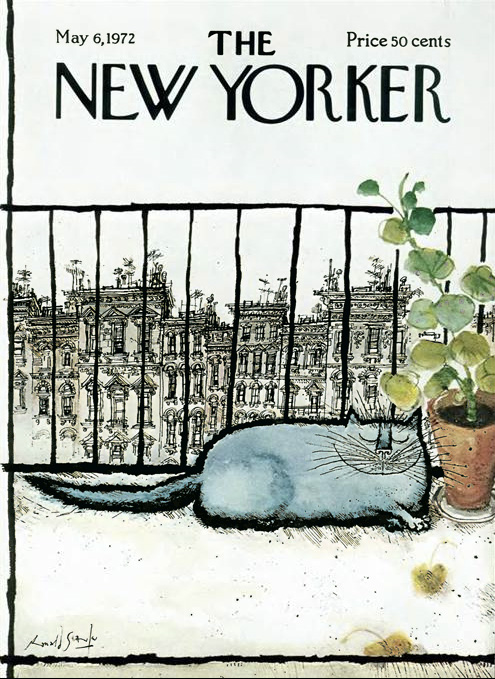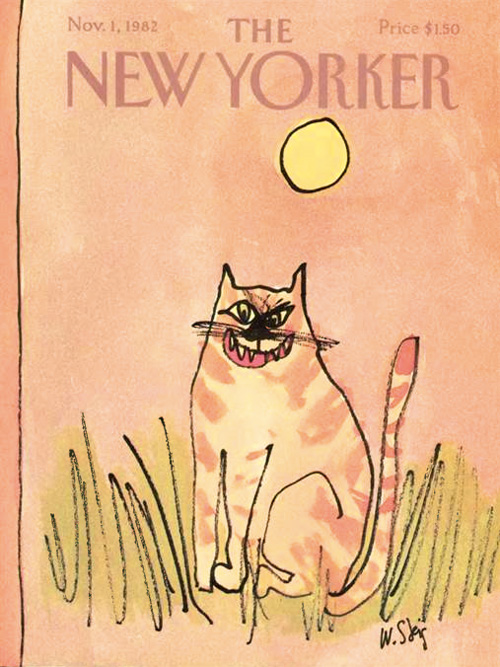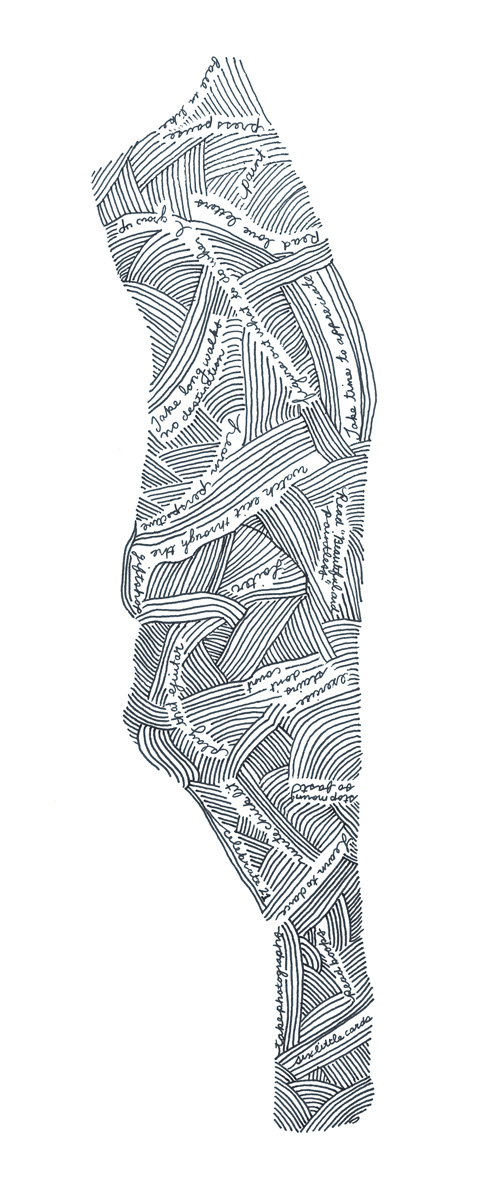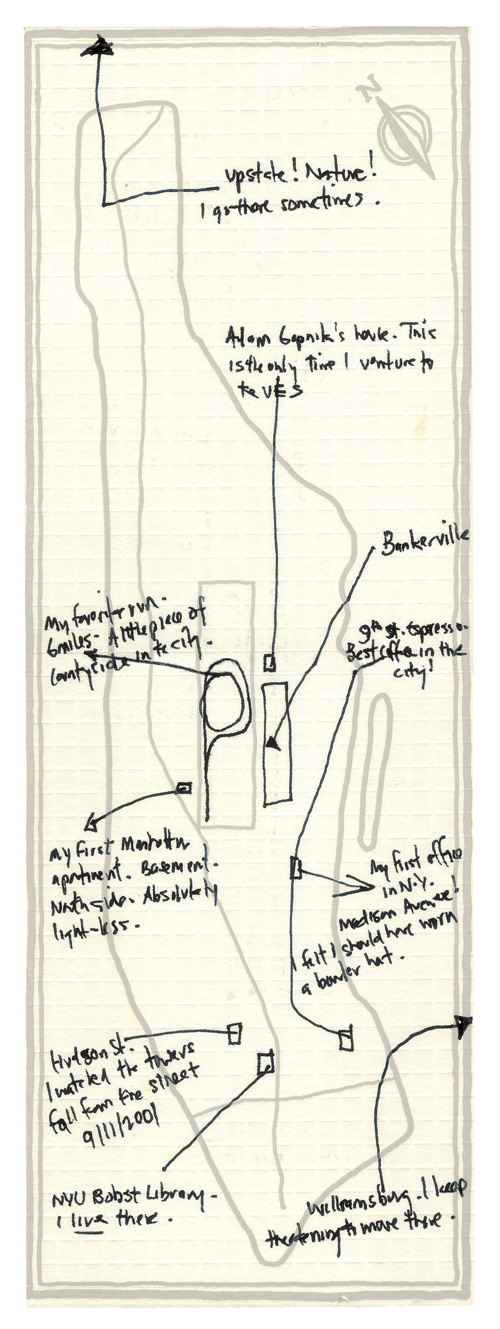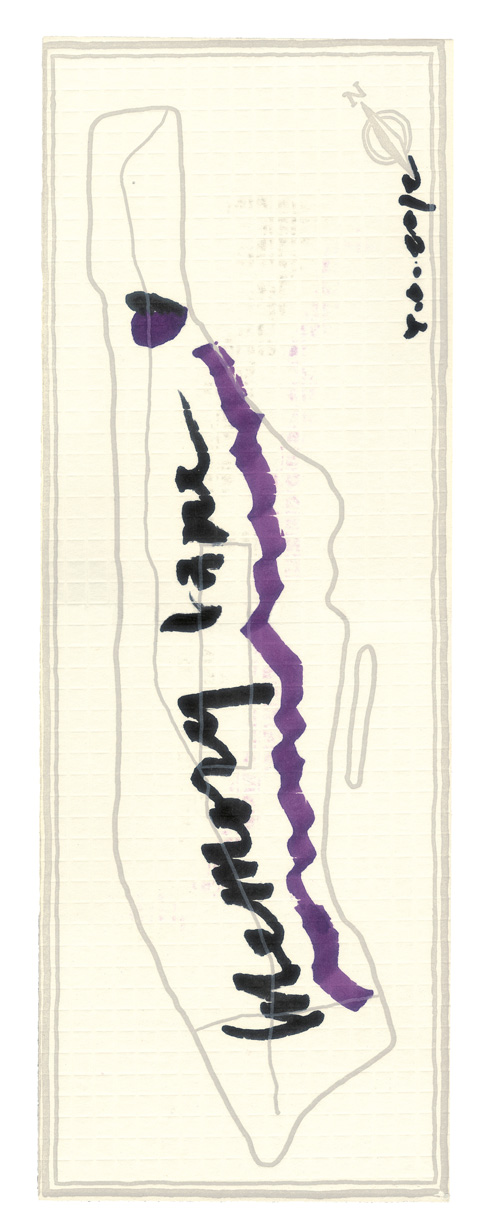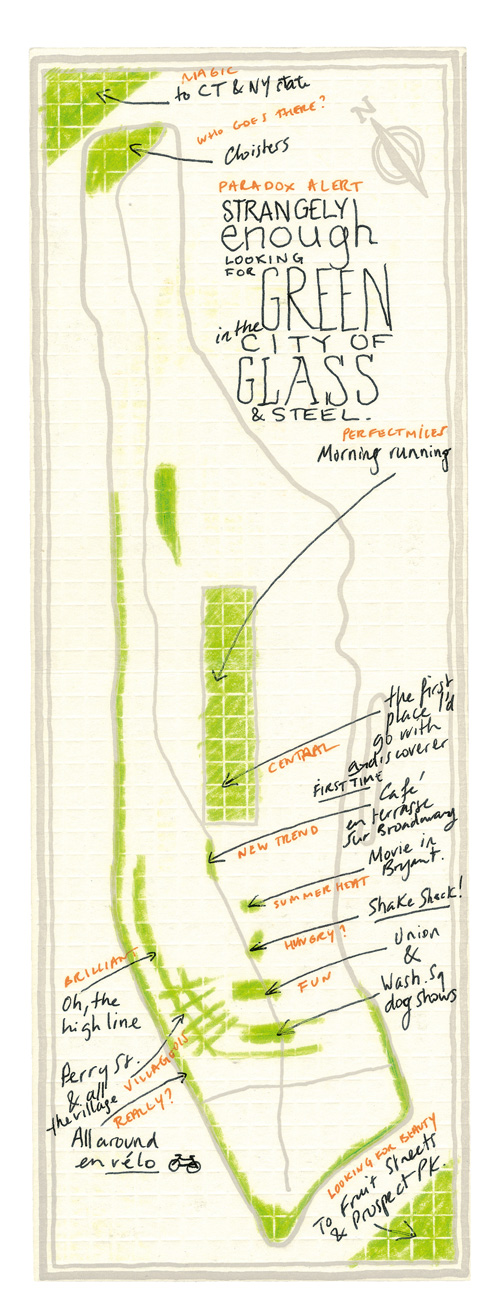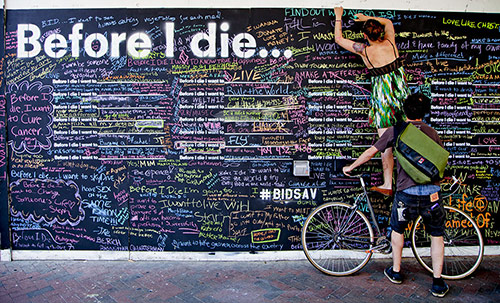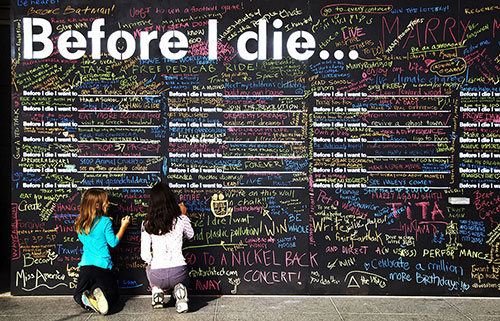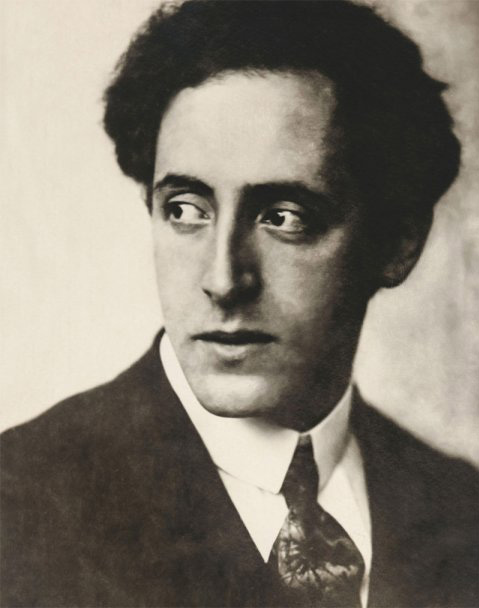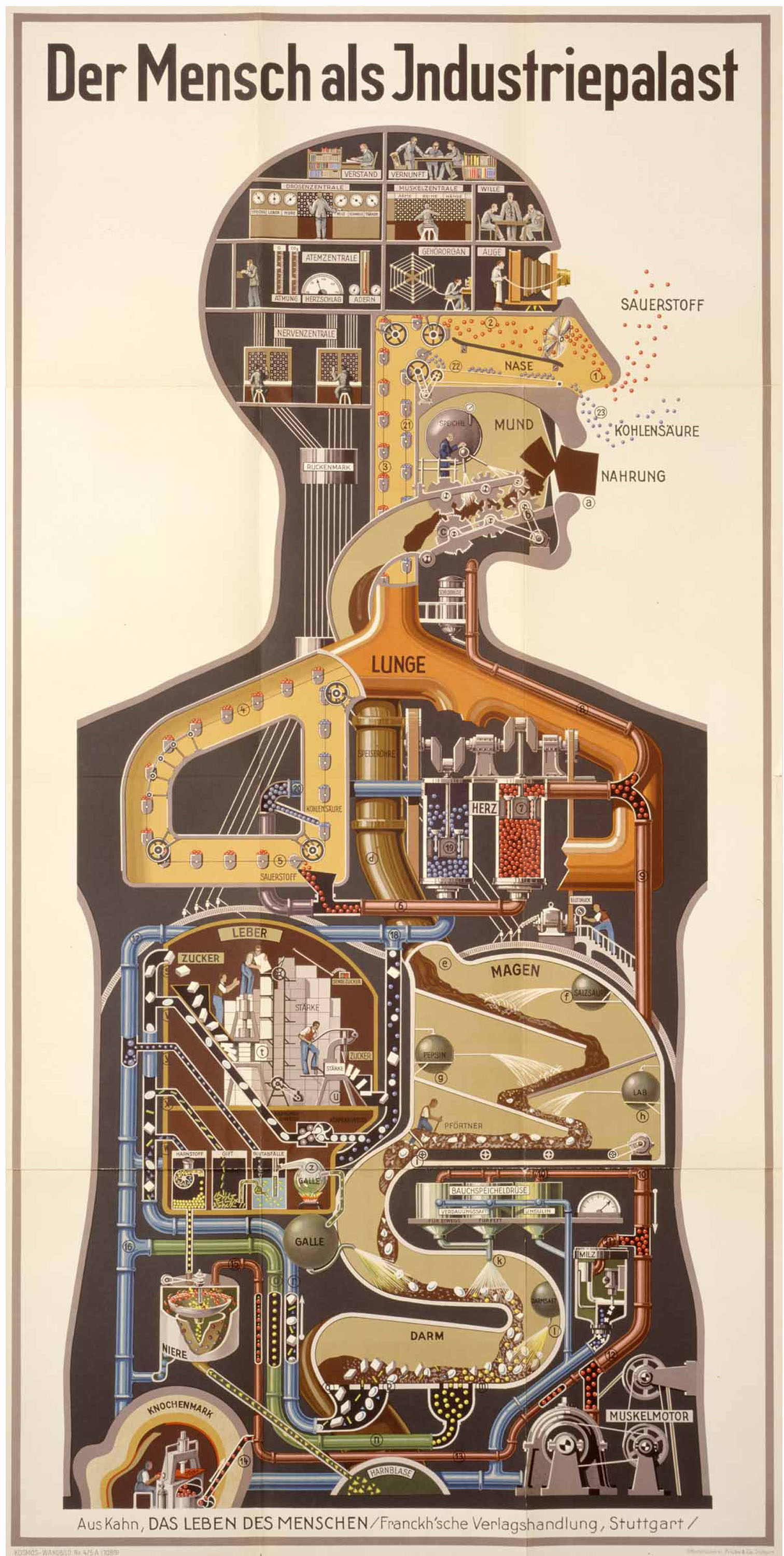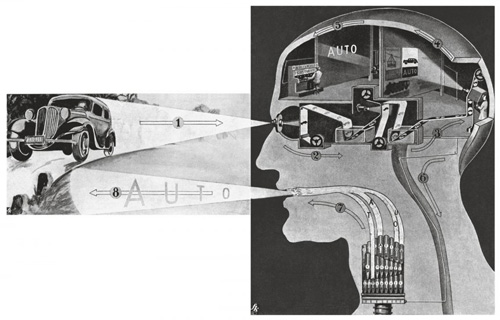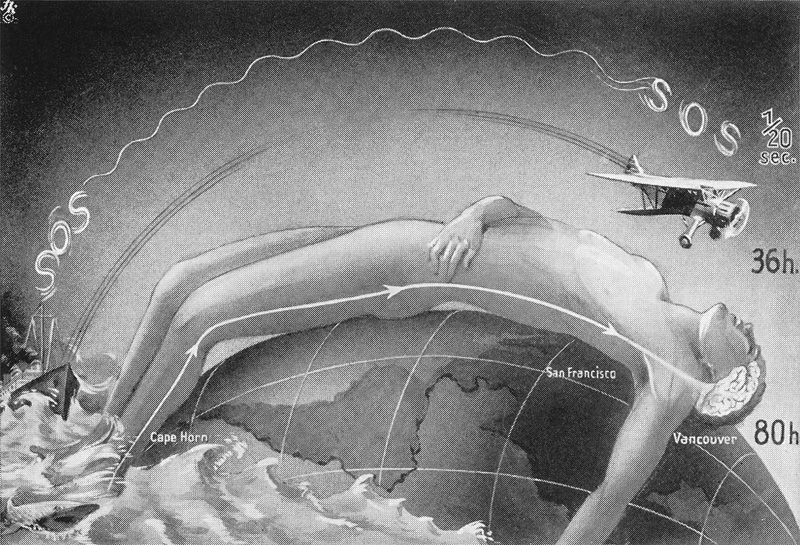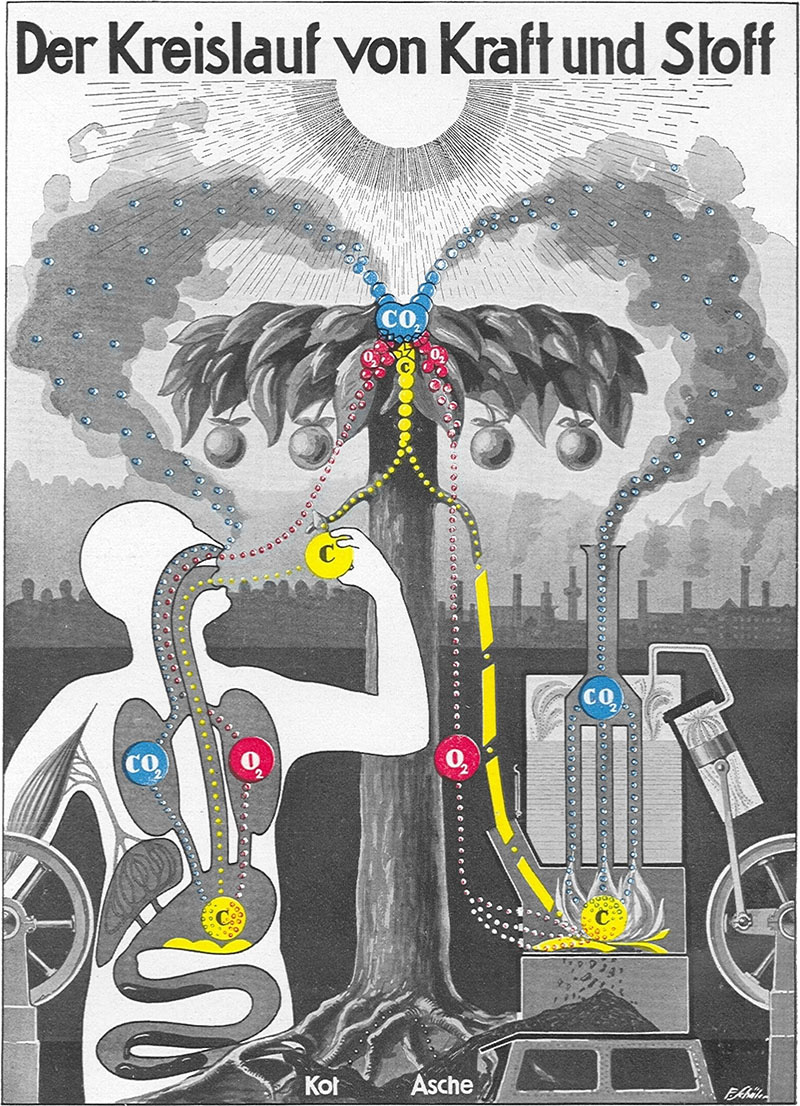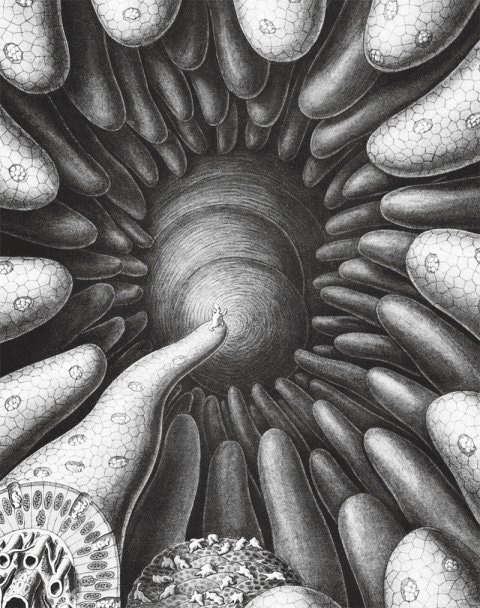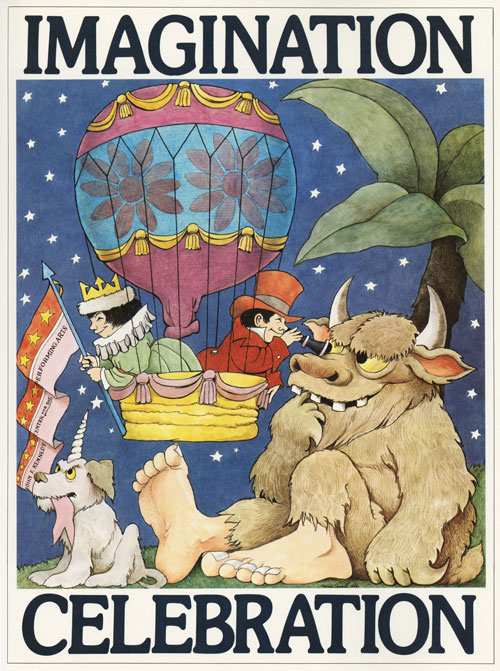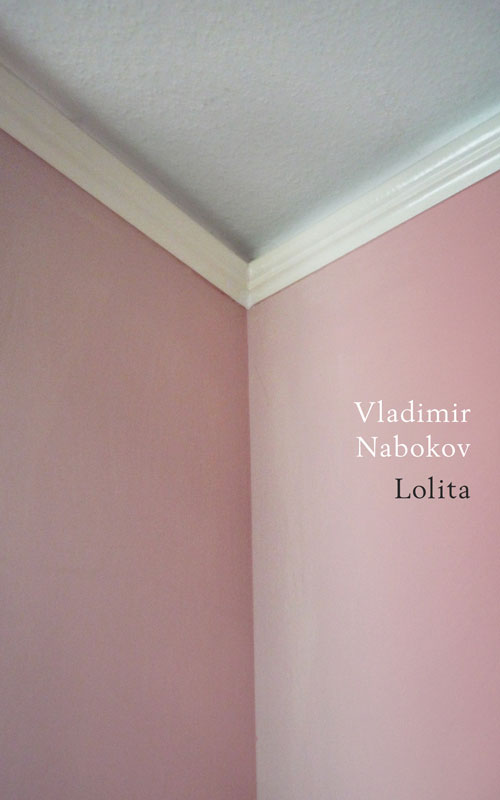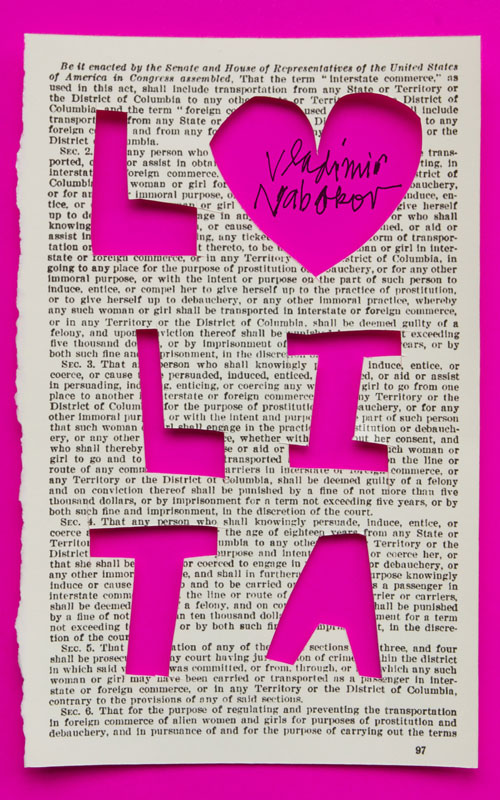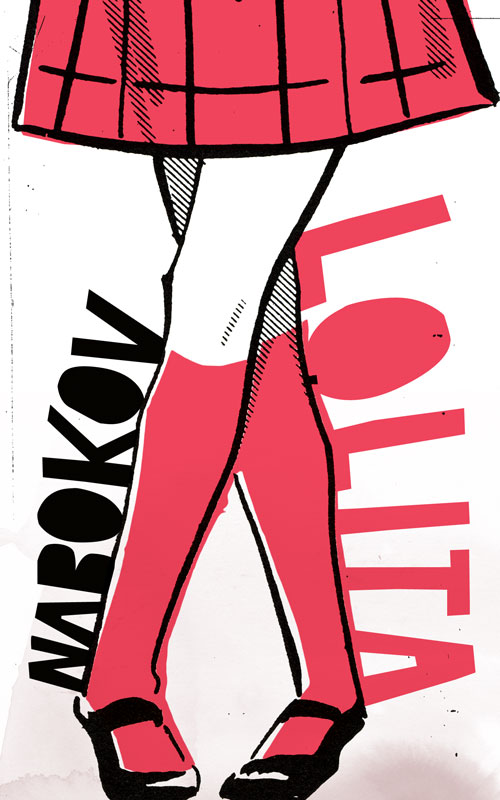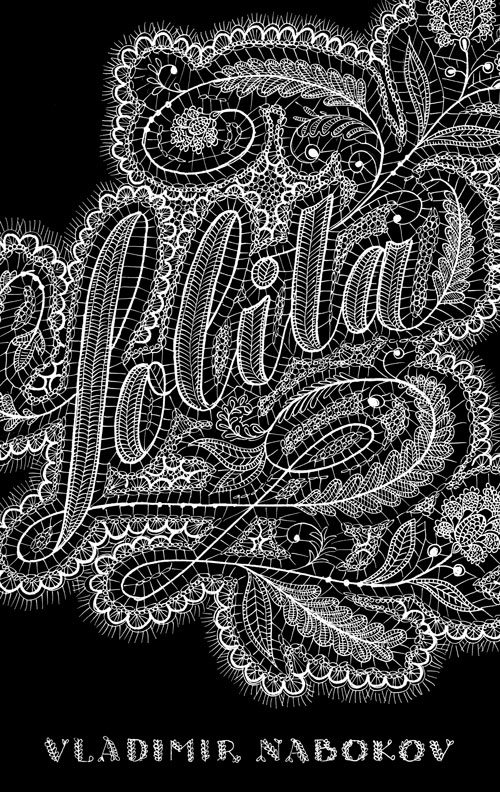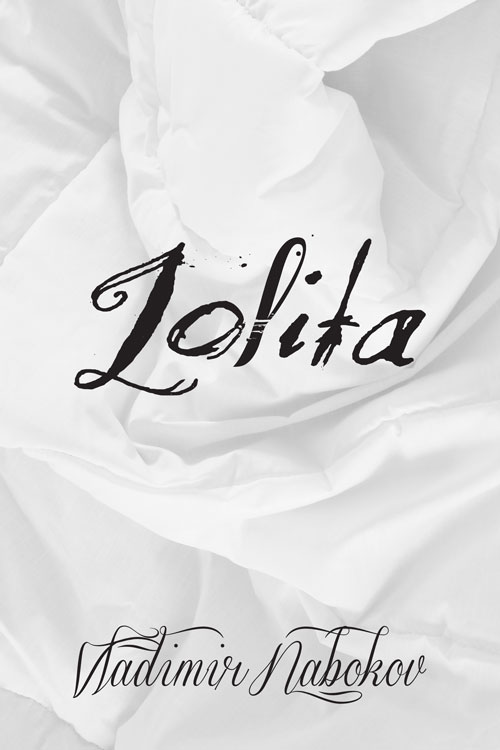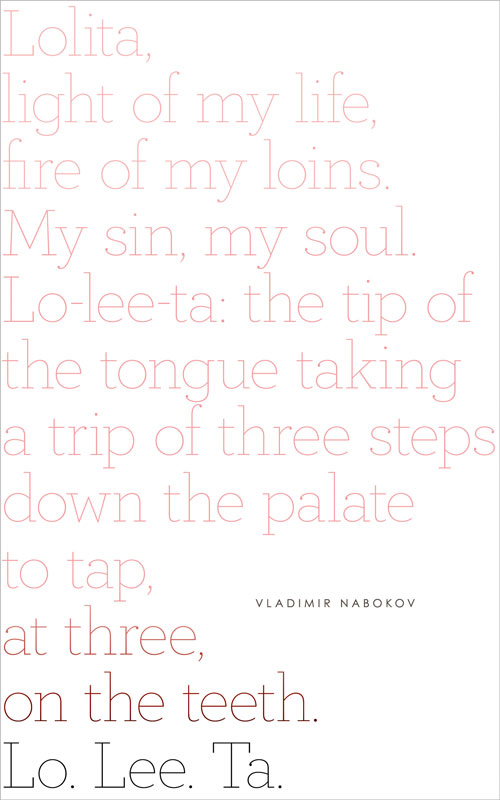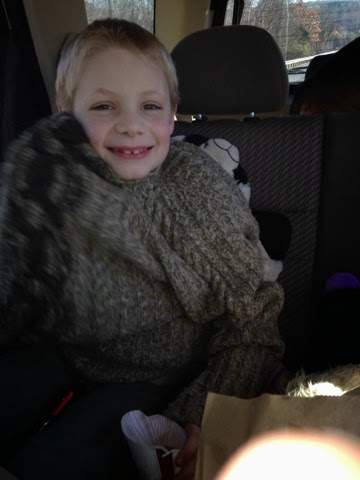Nylonthread
Shared posts
Asteroid spotted on collision course with Earth
NylonthreadAnticlimactic. Still geeky cool.
Benedict Cumberbatch Reads R. Kelly’s ‘Genius’ on ‘Jimmy Kimmel Live’
NylonthreadPerfectly silly reading... check out "Cumberbatchelor" clips (also silly).
On a recent episode of Jimmy Kimmel Live, actor Benedict Cumberbatch — who plays Smaug the dragon in the upcoming The Hobbit: The Desolation of Smaug, and Sherlock Holmes in the soon-to-return BBC series — read the lyrics of “Genius” by R. Kelly. Jimmy Kimmel Live also created a parody reality television show called The Cumberbatchelor, and Benedict Cumberbatch discusses his experiences filming The Hobbit and working with J.J. Abrams on Star Trek Into Darkness in a two-part interview:
videos via Jimmy Kimmel Live
Tattoo Comic Panel: Patrick Yurick’s Very Personal Project
NylonthreadWhat a brilliant tattoo!
Some days it’s hard to be creative, but many artists develop projects to constantly keep themselves sharp or as a personal challenge. You may have seen images of Patrick Yurick‘s project floating around lately, and he took the time to answer a few questions for us. Yurick, a lifelong fan and professional comic book artist, had comic book panels tattooed onto his arm. And, like many of you who’ve dedicated your life to your craft, he’s dedicated to filling in this panel with a new strip every day.
He was also inspired to tattoo the panels onto his left arm (he’s right-handed) because he developed the after school program “High Tech High Graphic Novel Project” four years ago. In this program, he’s dedicated a lot of time to learn how to teach comic books with large groups. He continues:
That’s really what the tattoo is, an activity sheet that I had tattooed on my forearm. Its a design prompt and one with constraints. It’s something I have become committed, as is the nature of tattoos, to working around it for the rest of my life.
I have to give credit to my wife though because without her it probably would’ve been the first tattoo I wanted to get: an onomatopoeia of Spider-Man’s ‘THWIP!’
For Yurick, he finds the daily prompt to have “an unlimited amount of possibilities to it” that can help him continue to practice his craft. He explains:
It forces me to look at the world a little differently every day and see possibilities in the mundane. Even as a simple graphic design – the blank tattoo represents, at the very least, a commitment to that idea. A commitment that, at this point, I can never escape. Well, unless I spend a lot more than a $50 groupon to get it removed.
…
What’s beautiful about the tattoo is that it is finished and unfinished at the same time. I like to imagine myself, 80 and wrinkled, drawing in a comic once everyday and chuckling to myself about how stupidly brilliant the whole thing is
In addition to his work at High Tech High as a art teacher, he’s created over 70 projects with students. He’s also forming “Making Comics,” which aims to teach visitors how to create a comic in “just about any circumstance.” This project will launch on January 1, so it’s worth hanging onto that url.
All photographs courtesy of David Difuntorum
And for those of you who need a bit of inspiration to take on your own creative endeavors, Yurick explains that the tattoo was “such a simply and good idea” and that he didn’t anticipate the amount of attention it has gotten. He created this project for himself and for himself to laugh at. Yurick advises, “Never forget to laugh at yourself – beautiful things can come from that place of carefree acceptance of the world.”
You may not have a tattoo to keep you creative, but we know that you’ve created some outstanding work of your own this past year. Don’t forget to enter your poster designs in the HOW Poster Design Awards by December 2.
The post Tattoo Comic Panel: Patrick Yurick’s Very Personal Project appeared first on HOW Design.
Inspiration for Kelly McGillis's Top Gun character now Pentagon #2
NylonthreadRock on, DSD Fox!

Christine Fox, the former mathematician at the Marine Corps Air Station Miramar who inspired Kelly McGillis's character in Top Gun, has become the first female Deputy Secretary of Defense, the number two role at the Pentagon. Fox will serve in an "acting capacity" until a permanent person is confirmed for the job by the Senate. (CNN)![]()
The 13 Best Art and Design Books of 2013
NylonthreadThis is long, but so full of awesome: Fritz Kahn! Josepf Albers! Maps, infographics, and yes, cats.
Imaginative maps, illuminating infographics, literary cats, vintage Soviet propaganda, Gertrude Stein’s favorite objects, and other treats for eye and spirit.
After the year’s best psychology and philosophy books and best biographies, memoirs, and history books, the season’s subjective selection of best-of reading lists continue with the finest art and design tomes published this year. (Catch up on last year’s best art books here and best design books here, then revisit the 2011 roundup here — one thing that truly great art and design books have in common is timeless mesmerism, independent of publication date.)
1. SELF-PORTRAIT AS YOUR TRAITOR
 “Still this childish fascination with my handwriting,” young Susan Sontag wrote in her diary in 1949. “To think that I always have this sensuous potentiality glowing within my fingers.” This is the sort of sensuous potentiality that comes aglow in Self-Portrait as Your Traitor (public library) — the magnificent collection of hand-lettered poems and illustrated essays by friend-of-Brain-Pickings and frequent contributor Debbie Millman. In the introduction, design legend Paula Scher aptly describes this singular visual form as a “21st-century illuminated manuscript.” Personal bias aside, these moving, lovingly crafted poems and essays — some handwritten, some drawn with colored pencils, some typeset in felt on felt — vibrate at that fertile intersection of the deeply personal and the universally profound.
“Still this childish fascination with my handwriting,” young Susan Sontag wrote in her diary in 1949. “To think that I always have this sensuous potentiality glowing within my fingers.” This is the sort of sensuous potentiality that comes aglow in Self-Portrait as Your Traitor (public library) — the magnificent collection of hand-lettered poems and illustrated essays by friend-of-Brain-Pickings and frequent contributor Debbie Millman. In the introduction, design legend Paula Scher aptly describes this singular visual form as a “21st-century illuminated manuscript.” Personal bias aside, these moving, lovingly crafted poems and essays — some handwritten, some drawn with colored pencils, some typeset in felt on felt — vibrate at that fertile intersection of the deeply personal and the universally profound.
In “Fail Safe,” her widely read essay-turned-commencement-address on creative courage and embracing the unknown from the 2009 anthology Look Both Ways, Millman wrote:
John Maeda once explained, “The computer will do anything within its abilities, but it will do nothing unless commanded to do so.” I think people are the same — we like to operate within our abilities. But whereas the computer has a fixed code, our abilities are limited only by our perceptions. Two decades since determining my code, and after 15 years of working in the world of branding, I am now in the process of rewriting the possibilities of what comes next. I don’t know exactly what I will become; it is not something I can describe scientifically or artistically. Perhaps it is a “code in progress.”
Self-Portrait as Your Traitor, a glorious large-format tome full of textured colors to which the screen does absolutely no justice, is the result of this progress — a brave and heartening embodiment of what it truly means, as Rilke put it, to live the questions; the stunning record of one woman’s personal and artistic code-rewriting, brimming with wisdom on life and art for all.
Originally featured in November. See an exclusive excerpt here, then take a peek at Debbie’s creative process here.
2. ART AS THERAPY
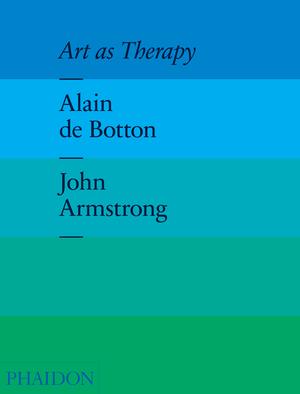 The question of what art is has occupied humanity since the dawn of recorded history. For Tolstoy, the purpose of art was to provide a bridge of empathy between us and others, and for Anaïs Nin, a way to exorcise our emotional excess. But the highest achievement of art might be something that reconciles the two: a channel of empathy into our own psychology that lets us both exorcise and better understand our emotions — in other words, a form of therapy.
The question of what art is has occupied humanity since the dawn of recorded history. For Tolstoy, the purpose of art was to provide a bridge of empathy between us and others, and for Anaïs Nin, a way to exorcise our emotional excess. But the highest achievement of art might be something that reconciles the two: a channel of empathy into our own psychology that lets us both exorcise and better understand our emotions — in other words, a form of therapy.
In Art as Therapy (public library), philosopher Alain de Botton — who has previously examined such diverse and provocative subjects as why work doesn’t work, what education and the arts can learn from religion, and how to think more about sex — teams up with art historian John Armstrong to examine art’s most intimate purpose: its ability to mediate our psychological shortcomings and assuage our anxieties about imperfection. Their basic proposition is that, far more than mere aesthetic indulgence, art is a tool — a tool that serves a rather complex yet straightforwardly important purpose in our existence:
Like other tools, art has the power to extend our capacities beyond those that nature has originally endowed us with. Art compensates us for certain inborn weaknesses, in this case of the mind rather than the body, weaknesses that we can refer to as psychological frailties. … Art holds out the promise of inner wholeness.
De Botton and Armstrong go on to outline the seven core psychological functions of art — remembering, hope, sorrow, rebalancing, self-understanding, growth, and appreciation — which you can read about at length in the original article, featured in October.
3. THE BIG NEW YORKER BOOK OF CATS
 “Dogs are not about something else. Dogs are about dogs,” Malcolm Gladwell proclaimed in the introduction to The Big New Yorker Book of Dogs, one of the best art books of 2012 and among the finest pet-related books of all time. Cats, on the other hand — despite their long history as literary muses, poetic devices, creative catalysts, and targets of artful grievances — are largely about something else, about some facet or other of our human needs, desires, and conceits: our relationships, our cities, our grappling with mortality.
“Dogs are not about something else. Dogs are about dogs,” Malcolm Gladwell proclaimed in the introduction to The Big New Yorker Book of Dogs, one of the best art books of 2012 and among the finest pet-related books of all time. Cats, on the other hand — despite their long history as literary muses, poetic devices, creative catalysts, and targets of artful grievances — are largely about something else, about some facet or other of our human needs, desires, and conceits: our relationships, our cities, our grappling with mortality.
So bespeaks The Big New Yorker Book of Cats (public library), the highly anticipated feline sequel to last year’s canine edition — a shiny, well-fed tome that gathers the best cat-coddling articles, essays, short stories, poems, cartoons, covers, and other feats of literature and art from the New Yorker archives. Spanning nearly nine decades, the collection featuring contributions from such celebrated minds as John Updike, Margaret Atwood, James Thurber, Susan Orlean, and even the patron saint of “the other side,” famed dog-lover E. B. White.
In the foreword, the great New Yorker film critic Anthony Lane lays out the decrees of cat-connoisseurship:
The first rule of felinology: you need to learn to look at cats down to the last whisker, every bit as closely as they look at you. To them, remember, nothing is lost in the dark.
And another solemn dictum:
Serious cat people, like first-rate art critics, are chivvied by passion into perspicacity. Believing is seeing.
Lane considers the singular allure of using the feline psyche as literary fodder:
This will never be anything but challenging, even if you wear motorcycle gauntlets and a knight’s visor, but it remains a quest to which many writers are lured. Perhaps they view it as a kind of scratching post — ready-made, abrasive chance to sharpen their natural skills.
Even Joyce, Lane tells us, was privy to it — in the fourth chapter of Ulysses, he tackled a “very specific quandary, the spelling of a cat’s ululation … and came up with the infinitesimal swell of ‘mkgnao’ into ‘mrkgnao.’” Lane illustrates the affectionate absurdity of it all with a tongue-in-cheek invitation: “Try both, out loud, but not after eating crackers, and see if you can tell them apart.”
More than anything, however, the anthology embodies the cat’s defining characteristic: its cluster of opposites, rolled together into a giant hairball of cultural attitudes — something, perhaps, at once uncomfortably and assuringly reflective of our own chronically conflicted selves. Lane writes:
So it is, as this well-fed book stretches out in languor, that the array of feline opposites starts to emerge. Cats must be destroyed; cats should be saved. Cats are like us; no, cats are not of this world. Cats can be savored for their fellowship, then eaten for their flesh. . . . Cats exist in these pages, as they do throughout our lives, both as obsessively singular … and as a barely controllable mass, doomed to proliferate forever, like poison ivy or biographies of Napoleon. Above all, for every cat who is liked, accepted or worshipped from afar, there is another who peers into our eyes — those hopeless orbs, superfluous at night — and spies only horror, indifference, and fear.
Indeed, despite the bountiful and often ardent cat-lovers among literary history’s famous pet-owners, Lane challenges the very notion that cats and literature go together:
Perhaps we need to rethink the assumption, deep-rooted but far from well grounded, that writers and cats are a good mix. Sure, Mark Twain had cats, such as Sour Mash and Blatherskite, and, up at the more louche and loping end of American literature, in the life and work of Poe, Kerouac, William Burroughs, Charles Bukowski, Edward Gorey, and Stephen King, you are never that far from the patter of ominous paws; whether a cat has been reared on a diet of neat Burroughs would find a niche at The New Yorker, however, is open to debate. We aim at the scrutable, the translucent, the undrugged, and the verified; whether we even get close is not for us to say, but such aspirations find no echo in the bosom of the cat. The cat sneers at clarity and career plans, and even its major stratagems can be dropped upon a whim. . . .
One of the best pieces in the collection, both for the sheer joy of exquisite language and for its disarming insight into the baffling paradoxes of the human-feline psychic bond, is a long 2002 feature by Susan Orlean, titled “The Lady and the Tigers.” Beyond the undeniable freakshow mesmerism of a true story about a New Jersey woman who owns more than two dozen tigers for no other reason than her intense love for the species, the essay, much like good visual caricature, also reveals a whole lot about the psychology of our ordinary relationships with small domestic cats through this woman’s extraordinary relationship with her gigantic felines. Take, for instance, the evolution of the woman’s tiger menagerie:
After arriving in Jackson, Byron-Marasek got six more tigers — Bengal, Hassan, Madras, Marco, Royal, and Kizmet — from McMillan and from Ringling Brothers. The next batch — Kirin, Kopan, Bali, Brunei, Brahman, and Burma — were born in the back yard after Byron-Marasek allowed her male and female tigers to commingle. More cubs were born, and more tigers obtained, and the tiger population of Holmeson’s Corner steadily increased. Byron-Marasek called her operation the Tigers Only Preservation Society. Its stated mission was, among other things, to conserve all tiger species, to return captive tigers to the wild, and “to resolve the human/tiger conflict and create a resolution.”
And so we get the perfect Orleanean spear at the heart of the human condition in all its absurdity:
You know how it is — you start with one tiger, then you get another and another, then a few are born and a few die, and you start to lose track of details like exactly how many tigers you actually have.
Tucked between the essays and short stories are also a number of delightful poems, such as this 1960 gem by Ted Hughes:
TOMCATS
Daylong this tomcat lies stretched flat
As an old rough mat, no mouth and no eyes.
Continual wars and wives are what
Have tattered his ears and battered his head.Like a bundle of old rope and iron
Sleeps till blue dusk. Then reappear
His eyes, green as ringstones: he yawns wide red,
Fangs fine as a lady’s needle and bright.A tomcat sprang at a mounted knight,
Locked round his neck like a trap of hooks
While the knight rode fighting its clawing and bite.
After hundreds of years the stain’s thereOn the stone where he fell, dead of the tom:
That was at Barnborough. The tomcat still
Grallochs odd dogs on the quiet,
Will take the head clean off your simple pullet.Is unkillable. From the dog’s fury,
From gunshot fired point-blank he brings
His skin whole, and whole
From owlish moons of bekitteningsAmong ashcans. He leaps and lightly
Walks upon sleep, his mind on the moon
Nightly over the round world of men
Over the roofs go his eyes and outcry.
(The poem was penned the year Frieda, his daughter with Sylvia Plath, was born — a child nursed on nursery rhymes — so one can’t help but find in Hughes’s playful verses the hint of an irreverent nursery rhyme.)
In his 1992 piece “Cat Man,” George Steiner tells the story of “the most illustrious, compelling cat in the history of literature” — a Montparnasse tabby named Bébert, who was abandoned by his Germany-bound owners at the onset of WWII and met his second owner, the novelist, physician and “manic crank” Louis-Ferdinand Destouches, better-known as Céline, in Paris. Bébert promptly proceeded to enthrall the man into describing him as “magic itself, tact by wavelength.” When the cat’s time came in his Sphinx-like years at the end of 1952, the obituary Destouches wrote — rivaled only by E. B. White’s remembrance of his beloved dog Daisy — was nothing short of a literary micro-masterpiece:
After many an adventure, jail, bivouac, ashes, all of Europe … he died agile and graceful, impeccably, he had jumped out the window that very morning. . . . We, who are born old, look ridiculous in comparison!
Perhaps the most recurring theme of all, however, is the concept of the cat not as an extension of the human self, as a dog might be, but rather as something otherworldly, mysterious, with a mind of its own onto which we may project our human intentions and interpretations, but one which we will ultimately never comprehend — a force of nature, often as uncontrollable as its elements, as in this 1960 poem by Elizabeth Bishop:
ELECTRICAL STORM
Dawn an unsympathetic yellow.
Cra-aack! — dry and light.
The house was really struck.
Crack! A tinny sound, like a dropped tumbler.
Tobias jumped in the window, got in bed –
silent, his eyes bleached white, his fur on end.
Personal and spiteful as a neighbor’s child,
thunder began to bang and bump the roof.
One pink flash;
then hail, the biggest size of artificial pearls.
Dead-white, wax-white, cold –
diplomats’ wives’ favors
from an old moon party –
they lay in melting windrows
on the red ground until well after sunrise.
We got up to find the wiring fused,
no lights, a smell of saltpetre,
and the telephone dead.The cat stayed in the warm sheets.
The Lent trees had shed all their petals:
wet, stuck, purple, among the dead-eye pearls.
Originally featured in October, with lots more art and excerpts.
4. INTERACTION OF COLOR: 50TH ANNIVERSARY EDITION
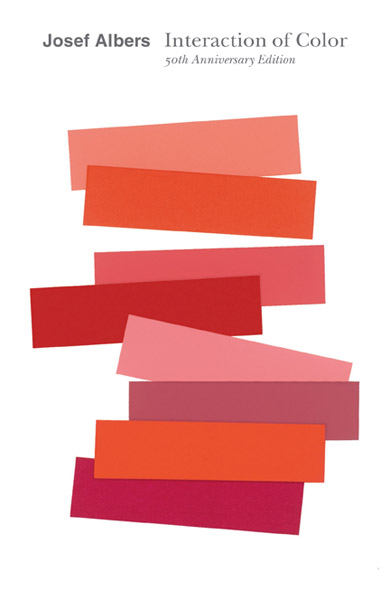 “Hundreds of people can talk, for one who can think,” John Ruskin wrote, “but thousands of people can think, for one who can see.” “We see, but we do not see: we use our eyes, but our gaze is glancing, frivolously considering its object,” Alexandra Horowitz lamented in her sublime meditation on looking. Hardly anyone has accomplished more in revolutionizing the art of seeing than German-born American artist, poet, printmaker, and educator Josef Albers, as celebrated for his iconic abstract paintings as he was for his vibrant wit and spellbinding presence as a classroom performer. In 1963, he launched into the world what would become the most influential exploration of the art, science, psychology, practical application, and magic of color — an experiment, radical and brave at the time, seeking to cultivate a new way of studying and understanding color through experience and trial-and-error rather than through didactic, theoretical dogma. Half a century later, Interaction of Color (public library), with its illuminating visual exercises and mind-bending optical illusions, remains an indispensable blueprint to the art of seeing.
“Hundreds of people can talk, for one who can think,” John Ruskin wrote, “but thousands of people can think, for one who can see.” “We see, but we do not see: we use our eyes, but our gaze is glancing, frivolously considering its object,” Alexandra Horowitz lamented in her sublime meditation on looking. Hardly anyone has accomplished more in revolutionizing the art of seeing than German-born American artist, poet, printmaker, and educator Josef Albers, as celebrated for his iconic abstract paintings as he was for his vibrant wit and spellbinding presence as a classroom performer. In 1963, he launched into the world what would become the most influential exploration of the art, science, psychology, practical application, and magic of color — an experiment, radical and brave at the time, seeking to cultivate a new way of studying and understanding color through experience and trial-and-error rather than through didactic, theoretical dogma. Half a century later, Interaction of Color (public library), with its illuminating visual exercises and mind-bending optical illusions, remains an indispensable blueprint to the art of seeing.
Albers, who headed the legendary Black Mountain College that shaped such luminaries as Zen composer John Cage and reconstructionist Ruth Asawa, lays out the book’s beautifully fulfilled and timeless promise in the original introduction:
In visual perception a color is almost never seen as it really is — as it physically is. This fact makes color the most relative medium in art.
In order to use color effectively it is necessary to recognize that color deceives continually. To this end, the beginning is not a study of color systems.
First, it should be learned that one and the same color evokes innumerable readings. Instead of mechanically applying or merely implying laws and rules of color harmony, distinct color effects are produced-through recognition of the interaction of color-by making, for instance, two very different colors look alike, or nearly alike.

THE RELATIVITY OF COLOR
A color has many faces, and one color can be made to appear as two different colors. Here it is almost unbelievable that the left small and the right small squares are part of the same paper strip and therefore are the same color. And no normal human eye is able to see both squares -- alike.
Albers defied the standard academic approach of “theory and practice,” focusing instead on “development of observation and articulation,” with an emphasis not only on seeing color, but also feeling the relationships between colors. He writes:
[Interaction of Color] reverses this order and places practice before theory, which after all, is the conclusion of practice. … Just as the knowledge of acoustics does not make one musical — neither on the productive nor on the appreciative side — so no color system by itself can develop one’s sensitivity for color. This is parallel to the recognition that no theory of composition by itself leads to the production of music, or of art.
Practical exercises demonstrate through color deception (illusion) the relativity and instability of color. And experience teaches that in visual perception there is a discrepancy between physical fact and psychic effect. What counts here — first and last — is not so-called knowledge of so-called facts, but vision — seeing. Seeing here implies Schauen (as in Weltanschauung) and is coupled with fantasy, with imagination.
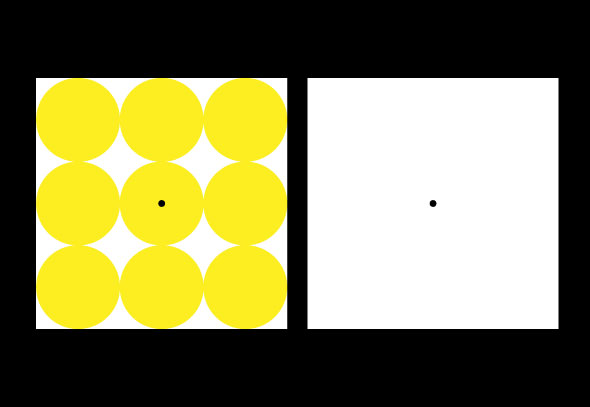
AFTERIMAGE EFFECT
The 'afterimage effect' demonstrates the interaction of color caused by interdependence of color: On the left are yellow circles of equal diameter which touch each other and fill out a white square. There is a black dot in its center. On the right is an empty white square, also with a centered black dot. Each is on a black background. After staring for half a minute at the left square, shift the focus suddenly to the right square. Instead of the usual color-based afterimage that would complement the yellow circles with blue, their opposite, a shape-based afterimage is manifest as diamond shapes -- the 'leftover' of the circles -- are seen in yellow. This illusion double, reversed afterimage is sometimes called contrast reversal.
To mark the book’s fiftieth anniversary, here is an excerpt from a fantastic Design Matters conversation with Brenda Danilowitz, Chief Curator at the Josef and Anni Albers Foundation, and Philip Tiongson, who designed the magnificent iPad app accompanying the new edition of the book, who discuss Albers’s far-reaching legacy and his fundamental contributions to our everyday understanding of color:
Albers believed that in normal seeing, we use our eyes so much because the world is controlled by our vision, but we become so accustomed to it that we take things for granted. And when he talked about visual perception, he meant something much more profound than just the way we look at the world — he would stop and look at the world, look at the smallest object, smallest event, and see through it in a deep kind of way. … He would see magic, he would see something deeper. And he believed that the majority of people just missed the true reality — it was available for everyone to see, but nobody was looking. And that was where his notion of “to open eyes” really comes from.
Originally featured in August — read the full article here.
5. MAPPING MANHATTAN
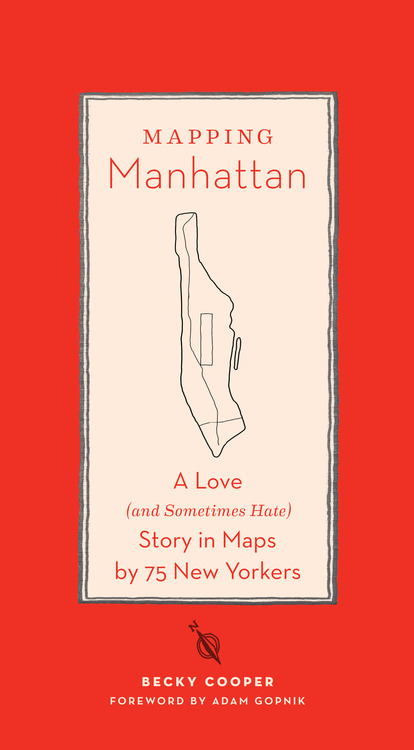 “New York blends the gift of privacy with the excitement of participation … so that every event is, in a sense, optional, and the inhabitant is in the happy position of being able to choose his spectacle and so conserve his soul,” E. B. White memorably wrote in his 1949 masterpiece Here Is New York. And indeed what a canvas of glorious shared eclecticism Gotham is — city of cats and city of dogs, city of beloved public spaces and beloved secret places, of meticulous order and sparkling chaos, but above all a city of private memories woven together into one shared tapestry of belonging.
“New York blends the gift of privacy with the excitement of participation … so that every event is, in a sense, optional, and the inhabitant is in the happy position of being able to choose his spectacle and so conserve his soul,” E. B. White memorably wrote in his 1949 masterpiece Here Is New York. And indeed what a canvas of glorious shared eclecticism Gotham is — city of cats and city of dogs, city of beloved public spaces and beloved secret places, of meticulous order and sparkling chaos, but above all a city of private memories woven together into one shared tapestry of belonging.
Maps, meanwhile, have long held unparalleled storytelling power as tools of propaganda, imagination, obsession, and timekeeping. From Denis Wood’s narrative atlas to Paula Scher’s stunning typo-cartographic subjectivity maps impel us to overlay the static landscape with our dynamic lived experience, our impressions, our selves.
The convergence of these two — New York’s extraordinary multiplicity and the emotive storytelling power of maps — is precisely what Becky Cooper set out to explore in an ongoing collaborative art project that began in an appropriately personal manner: The summer after her freshman year of college in 2008, Cooper became an accidental cartographer when she was hired to help map all of Manhattan’s public art. As she learned about mapping and obsessively color-coded the locations, she considered what it took to make “a map that told an honest story of a place” and was faced with the inevitable subjectivity of the endeavor, realizing that an assemblage of many little subjective portraits revealed more about a place than any attempt at a “complete” map.
And so the idea was born — to assemble a collaborative portrait of the city based on numerous individual experiences, memories, and subjective impressions. She painstakingly hand-printed a few hundred schematic maps of Manhattan on the letterpress in the basement of her college dorm, then walked all over the island, handing them to strangers and asking them to draw “their Manhattan,” then mail the maps back to her — which, in a heartening antidote to Gotham’s rumored curmudgeonly cynicism, they readily did. Dozens of intimate narratives soon filled her inbox — first loves, last goodbyes, childhood favorites, unexpected delights. In short, lives lived.
The finest of them are now collected Mapping Manhattan: A Love (And Sometimes Hate) Story in Maps by 75 New Yorkers (public library) — a tender cartographic love letter to this timeless city of multiple dimensions, parallel realities, and perpendicular views, featuring contributions from both strangers and famous New Yorkers alike, including Brain Pickings favorites like cosmic sage Neil deGrasse Tyson, artist-philosopher Yoko Ono, wire-walked Philippe Petit, The Map as Art author Katharine Harmon and Paris vs. New York creator Vahram Muratyan, as well as prominent New Yorkers like writer Malcolm Gladwell and chef David Chang.
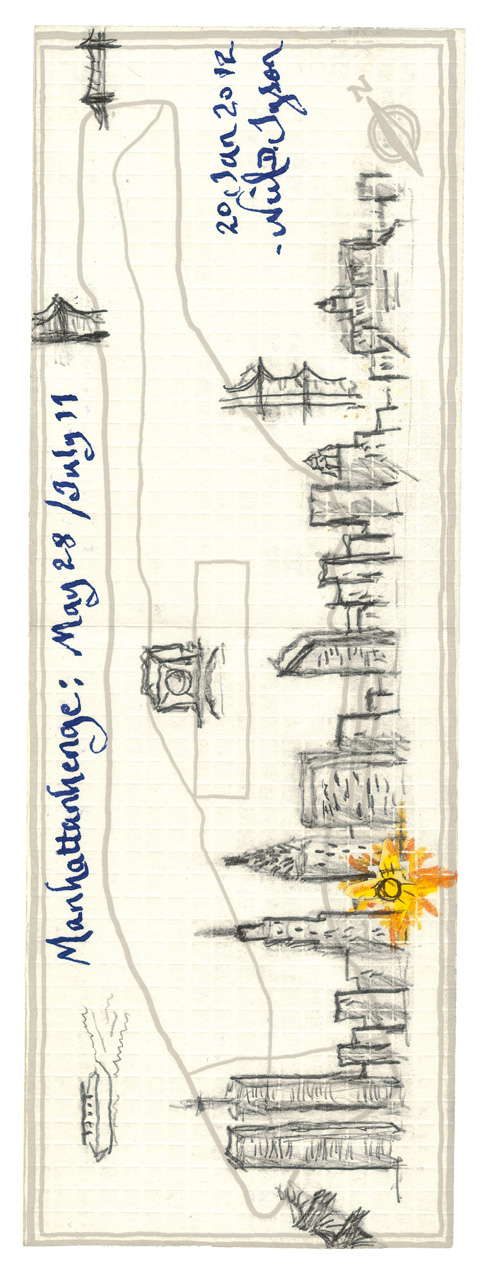
Neil deGrasse Tyson, astrophysicist and director of the Hayden Planetarium at the American Museum of Natural History (©Becky Cooper courtesy Abrams Image)
Cooper writes of the project:
The maps were like passports into strangers’ worlds. … I talked to gas station workers, MTA employees, artists, tourists, and veterans; to Columbia med students, Mister Softee drivers, city planners, San Francisco quilters, bakery owners, street cart vendors, Central park portraitists, jazz musicians, Watchtower distributors, undergrads, can collectors, and mail carriers. … These are their maps. Their ghosts. Their past loves. Their secret spots. Their favorite restaurants. These are their accidental autobiographies: when people don’t realize they’re revealing themselves, they’re apt to lay themselves much more bare.
[…]
I hope to show Manhattan as a cabinet of curiosities, a container of portals to hundreds of worlds; if I’ve succeeded, this portrait of the city will be as true as any of the seventy-five others.
The inimitable Adam Gopnik — a New Yorker’s New Yorker — writes in the foreword:
Maps and memories are bound together, a little as songs and love affairs are. The artifact envelops the emotion, and then the emotion stores away in the artifact: We hear ‘All the Things You Are’ or ‘Hey There Delilah’ just by chance while we’re in love, and then the love is forever after stored in the song. … This attachment requires no particular creative energy. It just happens. … Maps, especially schematic ones, are the places where memories go not to die, or be pinned, but to live forever.
Gopnik pads the metaphorical with the scientific, echoing Richard Dawkins, who famously speculated that drawing maps may have “boosted our ancestors beyond the critical threshold which the other apes just failed to cross,” and turns to the brain:
Cognitive science now insists that our minds make maps before they take snapshots, storing in schematic form the information we need to navigate and make sense of the world. Maps are our first mental language, not our latest. The photographic sketch, with its optical hesitations, is a thing we force from history; the map, with its neat certainties and foggy edges, looks like the way we think.
“A poem compresses much in a small space and adds music, thus heightening its meaning,” E. B. White wrote. “The city is like poetry: it compresses all life, all races and breeds, into a small island and adds music and the accompaniment of internal engines.” It is this poetry of the internal engine — the emotional excess necessary for creativity, the compressed feeling bursting out of the poet’s soul like a rocket — that Gopnik, too, observes in reverence:
A remembered relation of spaces, a hole, a circle, a shaded area — and a whole life comes alive. The real appeal of the map, perhaps, is not so much that it stores our past as that it forces our emotions to be pressed into their most parsimonious essence — and, as every poet knows, it is emotion under the force of limits, emotion pressed down and held down to strict formal constraints, that makes for the purest expression. These maps are street haiku, whose emotions, whether made by the well known or the anonymous, are more moving for being so stylized.
[…]
Each map in this book diagrams the one thing we most want a map to show us, and that is a way home.
The final page of Mapping Manhattan contains a blank map, inviting you to draw your Manhattan and mail it to Cooper.
Originally featured in April, with more maps and video.
6. BEFORE I DIE
 In early 2011, artist, designer, and TED Fellow Candy Chang, queen of thoughtful installations in public spaces that invite collaborative storytelling, covered an abandoned house in her New Orleans neighborhood in chalkboard paint and stenciled on it a grid of the deceptively simple unfinished sentence “Before I die I want to . . .,” which any passerby could complete with a piece of chalk and a personal aspiration. To Chang’s surprise, the wall was completely filled by the next day. Soon, the project took on a life of its own and was replicated in over 10 languages across more than thirty countries, giving voice to millions of such private yearnings.
In early 2011, artist, designer, and TED Fellow Candy Chang, queen of thoughtful installations in public spaces that invite collaborative storytelling, covered an abandoned house in her New Orleans neighborhood in chalkboard paint and stenciled on it a grid of the deceptively simple unfinished sentence “Before I die I want to . . .,” which any passerby could complete with a piece of chalk and a personal aspiration. To Chang’s surprise, the wall was completely filled by the next day. Soon, the project took on a life of its own and was replicated in over 10 languages across more than thirty countries, giving voice to millions of such private yearnings.
Before I Die (public library) collects the best of these public yet anonymous walls, from Alaska to Australia, Brooklyn to Berlin, filled with answers ranging from the poignant (“see a year without war”) to the silly (“sleep with a harp player”) to the disarmingly honest (“repair my broken heart”). Alongside the photographs are the stories of some of the people who chalked in their anonymous answers
Chang shares the genesis of the project, her harrowing personal brush with the mortality paradox:
Joan died on a quiet August day. She was a mother to me for fifteen years. She was kind and thoughtful. She loved to garden and she taught me how to plant flowers. When I was a confused teenager, she told me to be true to myself. Her death was sudden and unexpected, and there were so many things she still wanted to do: learn to play the piano, live in Paris, and see the Pacific Ocean. I spent a long time filled with grief. Then I felt gratitude for the time we had together.
Death was always on my mind. It brought clarity to my life. It reminded me of the people I want to love well, the type of person I want to become, and the things I want to do. But I struggled to maintain this perspective. It’s easy to get caught up in the day-to-day and forget what really matters to me. I wondered if other people felt the same way.
[…]
Death is something we’re often discouraged to talk about or even think about. … Perhaps that is why it took me so long to explore these thoughts, but when I finally did, I found a comfort and clarity that I did not expect. Beyond the tragic truth of mortality lies a bright calm that reminds me of my place in the world. When I think about death, the mundane things that stress me out are reduced to their small and rightful place; the things that matter most to me become big and crisp again. … Thinking about death clarifies your life.
The book opens with the perfect amuse-bouche of wisdom by none other than Carl Sagan:
We make our world significant by the courage of our questions and the depth of our answers.
But in a wonderfully paradoxical way, the project both embodies and counters this sentiment: The question at its heart isn’t particularly “courageous,” nor are the majority of the answers particularly “deep,” but the combination produces something profound and deeply human, and that’s precisely the point: What makes the world significant — more than that, what makes “the aggregate of our joy and suffering” significant — is perhaps the simplicity and sincerity of our answers to the simplest and most sincere of questions.
Indeed, the answers brim with seeming individual simplicity which somehow unravels the collective complexity of the human condition: World peace, curing cancer, and learning to love might not be the most original of answers, but something magical happens when anonymity strips us of the compulsion for originality and lays bare our deepest, most unoriginally human and heartfelt longings with crisp, urgent sincerity. In aggregate, they are a reminder of what truly matters — a moral lens on what should matter — as we face the immutable fact that one day, when we turn to look back on our lives, all the cleverness and pretentiousness and witticism will dissipate into dust over the burning coals of our innermost, simplest, most earnest desires for a meaningful life.
The project also inhabits — champions — another important dimension, the notion that public spaces anchor us to our physical reality and, at their best, awaken a richer relationship with our surroundings. Chang writes:
Our public spaces are as profound as we allow them to be. They are our shared spaces and reflect what matters to us as a community and as individuals. … At their greatest, our public spaces can nourish our well-being and help us see that we’re not alone as we try to make sense of our lives. They can help us grieve together and celebrate together and console one another and be alone together. Each passerby is another person full of longing, anxiety, fear, and wonder. With more ways to share in public space, the people around us can not only help us make better places, they can help us become our best selves.
Originally featured in October — see more here.
7. FRITZ KAHN
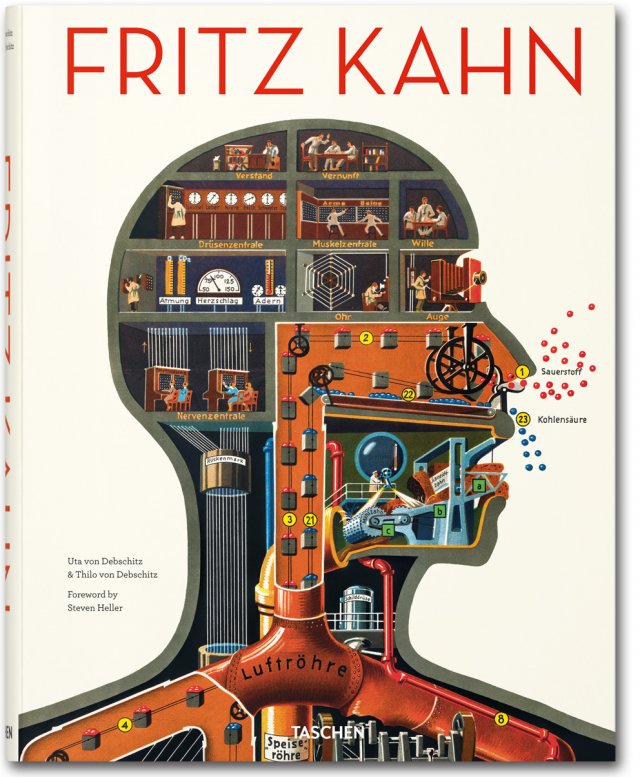 Around the time when Austrian sociologist, philosopher, and curator Otto Neurath was building his ISOTYPE visual language, which laid the foundation for pictogram-based infographics, another infographic pioneer was doing something even more ambitious: The German polymath Fritz Kahn — amateur astronomer, medical scientist by training, gynecologist by early occupation, artist by inclination, writer, educator and humanist by calling — was developing innovative visual metaphors for understanding science and the human body, seeking to strip scientific ideas of their alienating complexity and engage a popular audience with those essential tenets of how life works. Best-known today for his iconic 1926 poster Man as Industrial Palace, Kahn inspired generations of scientific illustrators, including such legends as Irving Geis and such cultural treasures as the 1959 gem The Human Body: What It Is And How It Works. His influence reverberates through much of our present visual communication and today’s best infographics .
Around the time when Austrian sociologist, philosopher, and curator Otto Neurath was building his ISOTYPE visual language, which laid the foundation for pictogram-based infographics, another infographic pioneer was doing something even more ambitious: The German polymath Fritz Kahn — amateur astronomer, medical scientist by training, gynecologist by early occupation, artist by inclination, writer, educator and humanist by calling — was developing innovative visual metaphors for understanding science and the human body, seeking to strip scientific ideas of their alienating complexity and engage a popular audience with those essential tenets of how life works. Best-known today for his iconic 1926 poster Man as Industrial Palace, Kahn inspired generations of scientific illustrators, including such legends as Irving Geis and such cultural treasures as the 1959 gem The Human Body: What It Is And How It Works. His influence reverberates through much of our present visual communication and today’s best infographics .
Now, visual culture powerhouse Taschen has captured the life’s work of this infographic pioneer in the magnificent monograph Fritz Kahn (public library) — a 6-pound tome in English, French and German that collects and contextualizes his most influential images and essays and, above all, celebrates a boundless mind that never settled for limiting itself to a single discipline, to any one area of curiosity, to the onus and hubris of specialization that our culture so vehemently and so toxically fetishizes.
In the introduction, the prolific design historian and writer Steven Heller calls Kahn and Neurath “two sides of the same pie chart,” despite the fact that they likely never met:
Each passionately sought to devise a distinct graphic design language to replace the jargon and lay waste to an ever-growing Tower of Babel.
Like Neurath, who didn’t actually create the symbols he became known for, Kahn was not an artist himself but compensated for it with the potent combination of his powers of logic and his ability to surround himself with top talent, who would execute his visions while also expanding his taste and visual literacy. Though his innovative methods were themselves a force to be reckoned with, the underlying impetus was as simple as it was profound: Kahn was just a brilliant science communicator who sought to engage the public’s imagination in popularizing science. He used his infographics as Carl Sagan did narrative and the moving image, subverting the medium — and subverting it masterfully — to the goals of the message. Heller writes:
His graphic design preferences were eclectic and included such methods as photo-collage, painting and drawing and styles like comic, surrealist, dada and more. The art of analogy was Kahn’s forte (sometimes to the extreme): he might compare an ear with a car or a bird’s feather with railroad tracks, all meant to explain ever more impenetrable phenomena by means which triggered the viewer’s imagination. Kahn employed whatever visual trick he could cobble together for the end result: popular comprehension.
[…]
The legacy of Kahn’s work has resonance now and will continue into the future.
Kahn found his greatest power in enlisting the physical to explain the metaphorical. As a scientist, he understood the visual bias of our brains; as an artistically minded design-thinker, he knew how powerfully graphics could convey ideas and ideologies; as a man of medicine, he grasped the importance of visualizing the body to illuminate its inner workings.
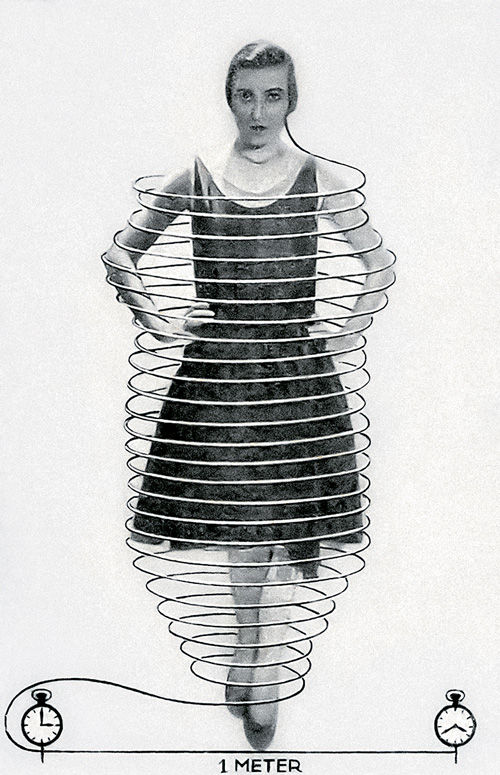
'Daily hair growth: the human body produces 100 feet of hair substance every day. If all this growth were to converge into one single hair, that hair would grow by one inch every minute.' (1929)
Kahn was also keenly aware of the importance of pictures in education. He trawled textbooks and scientific journals for material to use in his famous “man book,” but he enlisted his artists and the design department of his publishing house in infusing the images with more life, more vibrancy, greater calls to the imagination. He developed a style based on architectural and industrial visual metaphors and began depicting the human body as a series of modern workplaces, with each organ and organ-system operated by different machines, control panels, and circuits, as in his famous Man as Industrial Palace, seeking “to depict the most important processes of life, which can never be observed directly, in the form of familiar technical processes.” (Bear in mind, he was working long before some of the most now-fundamental notions in modern science were known, decades before even the discovery of DNA.)
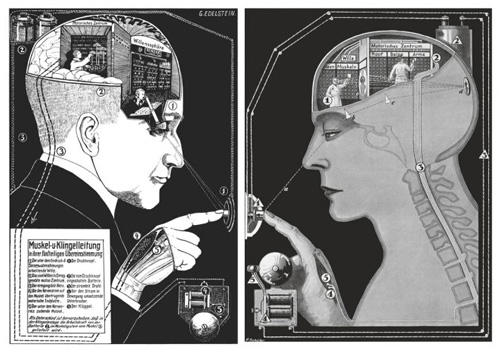
'The five points in common between muscle operation and an electric doorbell circuit: (1) volition — bell button, (2) motor center — battery, (3) nerve — wire, (4) motor end-plate — interpreter, (5) muscle — clapper.' (1924, 1927)
Kahn could also be considered a pioneer of interactive storytelling long before the technologies of interaction existed. He transformed the pictorial image from a static object to passively behold to an active invitation to engage, reimagine, and connect:
Kahn’s conceptual illustrations inverted the text-image relationship that had prevailed until then. The picture took prominence and switched from observed object to active agent, opening up new imaginary spaces for the viewer. It challenged the viewer to explore these spaces independently, to find [his or her] place in them, and develop new perspectives from there — a life-saving ability in a crisis-torn age like that of [the world war].
[…]
Apart from instruction and entertainment, edification is another important function of the illustrated factual book. Meaning, comfort, fresh perspectives, and ideally a faith that can move mountains, often form in reaction to a strong aesthetic impulse — for example, in the borderland between science and art. Kahn knew the healing effect of the “imagination” from personal and medical experience, especially in relation to observing the macro- or microcosm. … Verbal and visual images can help man (re)connect with himself, his group, the world and the universe, to find his way or place.
Above all, however, Kahn was a kind of scientific poet who enlisted the tenets of literature and the arts in making scientific ideas not only accessible but exciting. One of the most beautiful examples of this comes from his 1924 article for the journal Kosmos, titled “Fairy-tale Journey on the Bloodstream.” In it, he extols “the drama which, since its discovery 200 years ago, has repeatedly stirred the ecstasy of all who have seen it: the circulation of the blood” and writes — sings, almost:
“What a drama, but alas, only a drama!” The microscope’s field of vision is narrowly limited and we see the blood cells arriving on one side and disappearing again on the other… where from? where to? — we don’t know […]. The researcher stops at the rigid circle of his microscope’s field of vision, but we, we are poets, and who will forbid the imagination to travel to magical realms over lands and over seas like the child with the seven swans? […] Like the hero of the “last fairy-tale” we become smaller and smaller until at last we stand microscopically tiny, mini-Lilliputians on the bank of the vein-stream, and see the cells drifting past us, as big as the barques [large sailing ships] of men. We climb up one of the cliffs that loom into the stream, and wait. Cell after cell swims past, but quick and in the middle of the stream, unattainable to our desires. At last, however, a cell-boat drifts close to us on the beach, settles askew like a ship run aground, we leap across and into it, now it tilts from side to side, we push off and sail away. We are sailing! In our cell-boat on the red-gold stream of blood! Farewell, realm of man! We are in the land of fairy-tales, the fairy-tale land of truth, above which you rough giants gap blithely away on your great feet, and we sail towards miracles, true miracles!
Originally featured in November — read the full article here.
8. TENDER BUTTONS
 Given my affinity for all things Gertrude Stein and my enduring admiration for the art of my frequent collaborator and talented friend Lisa Congdon, I was instantly enamored with Tender Buttons: Objects (public library) — Stein’s 1914 collection of avant-garde verses celebrating everyday objects in her signature style of semantic somersaults, brought to fresh life with Lisa’s vibrant illustrations of birds, boxes, cups, clocks, umbrellas, and other ordinary objects made extraordinary.
Given my affinity for all things Gertrude Stein and my enduring admiration for the art of my frequent collaborator and talented friend Lisa Congdon, I was instantly enamored with Tender Buttons: Objects (public library) — Stein’s 1914 collection of avant-garde verses celebrating everyday objects in her signature style of semantic somersaults, brought to fresh life with Lisa’s vibrant illustrations of birds, boxes, cups, clocks, umbrellas, and other ordinary objects made extraordinary.
A FEATHER.
A feather is trimmed, it is trimmed by the light and the bug and the post, it is trimmed by little leaning and by all sorts of mounted reserves and loud volumes. It is surely cohesive.
I asked Lisa about the project’s particular mesmerism:
Every now and again an illustration project comes your way that feels like sheer kismet. I’ve had an infatuation with the life of Gertrude Stein since I was in my early 20s, and I’ve always been intrigued by her bizarre poetry.
Hope in gates, hope in spoons, hope in doors, hope in tables, no hope in daintiness and determination. Hope in dates.
In the morning there is meaning, in the evening there is feeling.
Originally featured in March.
9. BEST AMERICAN INFOGRAPHICS
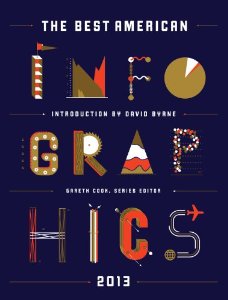 As an appreciator of the art of visual storytelling by way of good information graphics — an art especially endangered in this golden age of bad infographics served as linkbait — I was thrilled and honored to be on the advisory “Brain Trust” for a project by Pulitzer-Prize-winning journalist, New Yorker writer, and Scientific American neuroscience blog editor Gareth Cook, who has set out to highlight the very best infographics produced each year, online and off. (Disclaimer for the naturally cynical: No money changed hands.) The Best American Infographics 2013 (public library) is now out, featuring the finest examples from the past year — spanning everything from happiness to sports to space to gender politics, and including a contribution by friend-of-Brain Pickings Wendy MacNaughton — with an introduction by none other than David Byrne. Accompanying each image is an artist statement that explores the data, the choice of visual representation, and why it works.
As an appreciator of the art of visual storytelling by way of good information graphics — an art especially endangered in this golden age of bad infographics served as linkbait — I was thrilled and honored to be on the advisory “Brain Trust” for a project by Pulitzer-Prize-winning journalist, New Yorker writer, and Scientific American neuroscience blog editor Gareth Cook, who has set out to highlight the very best infographics produced each year, online and off. (Disclaimer for the naturally cynical: No money changed hands.) The Best American Infographics 2013 (public library) is now out, featuring the finest examples from the past year — spanning everything from happiness to sports to space to gender politics, and including a contribution by friend-of-Brain Pickings Wendy MacNaughton — with an introduction by none other than David Byrne. Accompanying each image is an artist statement that explores the data, the choice of visual representation, and why it works.
Byrne, who knows a thing or two about creativity and has himself produced some delightfully existential infographics, writes:
The very best [infographics] engender and facilitate an insight by visual means — allow us to grasp some relationship quickly and easily that otherwise would take many pages and illustrations and tables to convey. Insight seems to happen most often when data sets are crossed in the design of the piece — when we can quickly see the effects on something over time, for example, or view how factors like income, race, geography, or diet might affect other data. When that happens, there’s an instant “Aha!”…
Byrne addresses the healthy skepticism many of us harbor towards the universal potency of infographics, reminding us that the medium is not the message — the message is the message:
A good infographic … is — again — elegant, efficient, and accurate. But do they matter? Are infographics just things to liven up a dull page of type or the front page of USA Today? Well, yes, they do matter. We know that charts and figures can be used to support almost any argument. . . . Bad infographics are deadly!
One would hope that we could educate ourselves to be able to spot the evil infographics that are being used to manipulate us, or that are being used to hide important patterns and information. Ideally, an educated consumer of infographics might develop some sort of infographic bullshit detector that would beep when told how the trickle-down economic effect justifies fracking, for example. It’s not easy, as one can be seduced relatively easily by colors, diagrams and funny writing.
And, indeed, at the heart of the aspiration to cultivate a kind of visual literacy so critical for modern communication. Here are a few favorite pieces from the book that embody that ideal of intelligent elegance and beautiful revelation of truth:
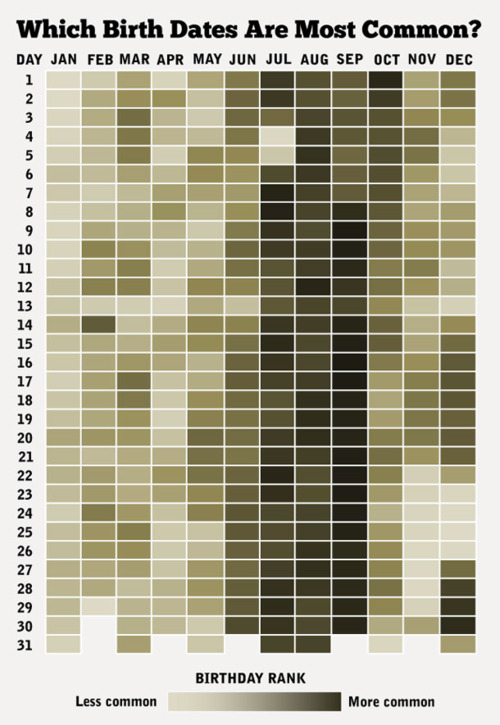
America's Most Popular Birthdays
The days of the year, ranked by the number of babies born on each day in the United States (Matt Stiles, NPR data journalist)
Byrne — who believes the best use of infographics allows us to “experience a kind of geeky rapture as our senses are amplified and expanded through charts and illustrations” — is especially fond of one sub-genre:
Flowcharts [are] a form of poetry. And poetry is its own reward.
Indeed, flowcharts have a singular way of living at the intersection of the pragmatic and the existential:
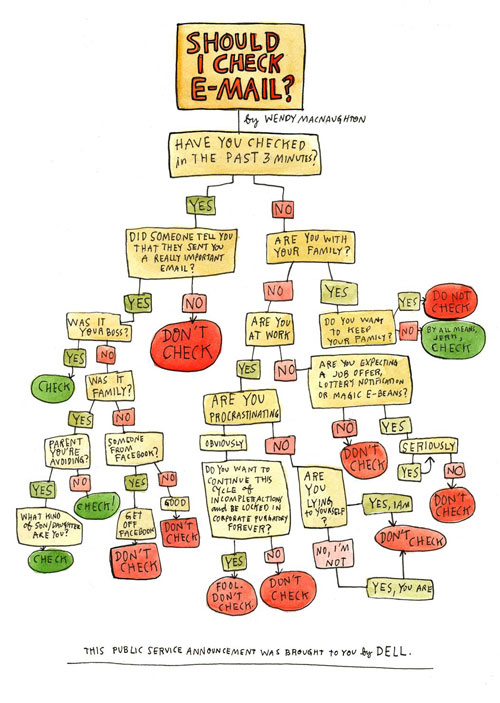
Email: Help for Addicts
A handy flowchart to help you decide if you should check your email. (Wendy MacNaughton, independent illustrator, for Forbes)
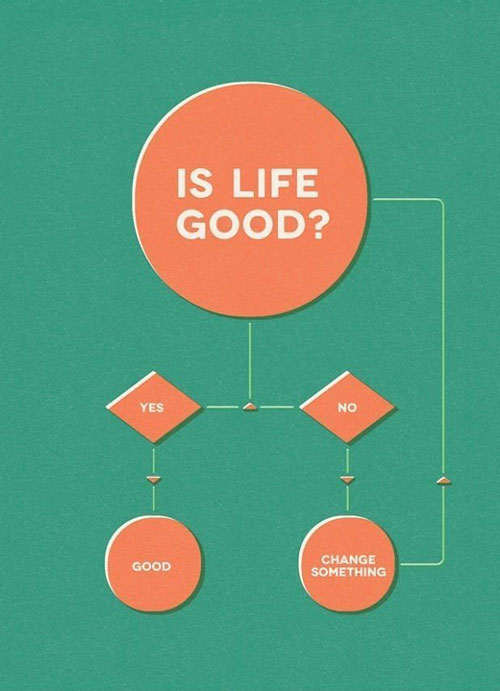
How to Be Happy
Just ask yourself one question. (Gustavo Vieira Dias, creative director of DDB Tribal Vienna)
Some appear more visually abstract yet derive from precise and concrete data sets:
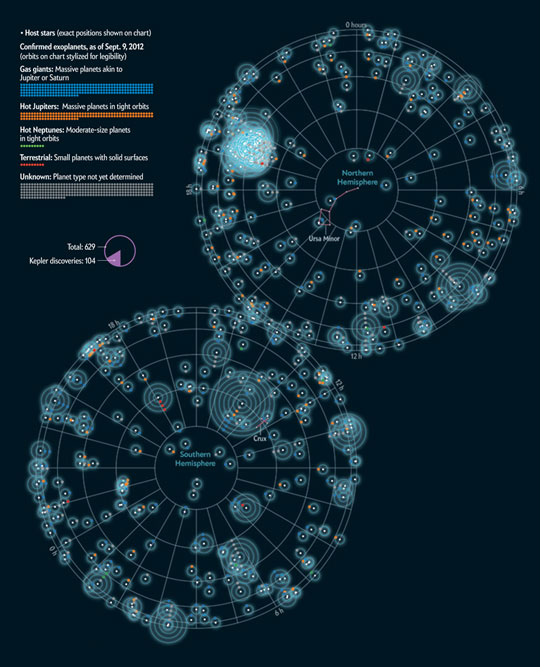
Planets Everywhere
All of the planets discovered outside the Solar System. (Jan Willem Tulp, freelance information designer, for Scientific American)
Then there’s the mandatory love of pie charts and its derivatives:
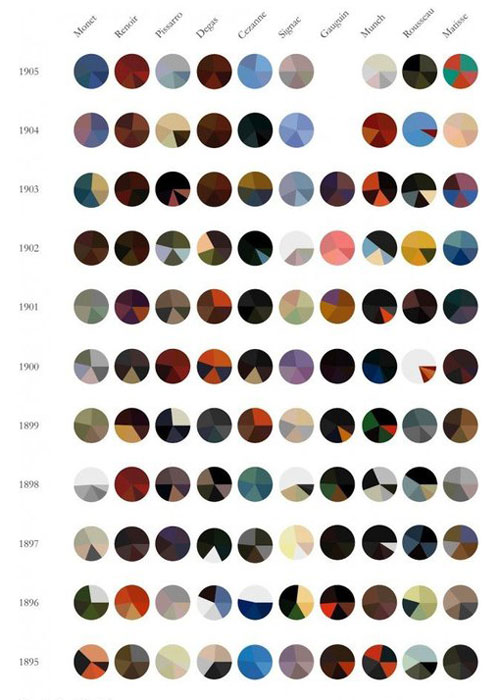
Ten Artists, Ten Years
A revolution in color over ten extraordinary years in art history. Each pie chart represents an individual painting, with the five most prominent colors shown proportionally. (Arthur Buxton)

Seasonal Produce Calendars
The availability of produce in the northern hemisphere by month and season. (Russell van Kraayenburg)
The greatest power of infographics, however, lies in two things: Their ability to weave visual metaphors that enhance our understanding, something particularly potent given how essential metaphorical thinking is to the way we communicate and learn, and their role in igniting the very pattern recognition that fuels our creative comprehension. Byrne writes:
We have an inbuilt ability to manipulate visual metaphors in ways we cannot do with the things and concepts they stand for — to use them as malleable, conceptual Tetris blocks or modeling clay that we can more easily squeeze, stack, and reorder. And then — whammo! — a pattern emerges, and we’ve arrived someplace we would never have gotten by any other means.
Originally featured in September — see more here.
10. MAURICE SENDAK
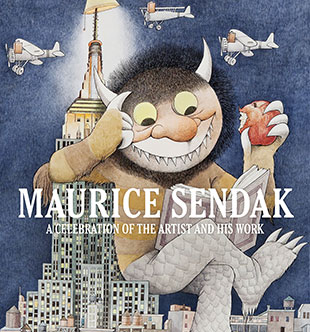 Maurice Sendak is celebrated by many, myself included, as the greatest and most influential children’s book artist of the past century. A year after Sendak’s death comes Maurice Sendak: A Celebration of the Artist and His Work (public library) — the companion volume to the wonderful 2013 exhibition at New York’s Society of Illustrators, and also among the year’s best biographies, memoirs, and history books. From rich essays by historians and artists who contextualize Sendak’s life and legacy to a selection of his best-loved and notable little-known illustrations, the book is a treasure trove of insight on Sendak’s spirit, sensibility, and evolution as an artist.
Maurice Sendak is celebrated by many, myself included, as the greatest and most influential children’s book artist of the past century. A year after Sendak’s death comes Maurice Sendak: A Celebration of the Artist and His Work (public library) — the companion volume to the wonderful 2013 exhibition at New York’s Society of Illustrators, and also among the year’s best biographies, memoirs, and history books. From rich essays by historians and artists who contextualize Sendak’s life and legacy to a selection of his best-loved and notable little-known illustrations, the book is a treasure trove of insight on Sendak’s spirit, sensibility, and evolution as an artist.
Dive deeper with excerpts exploring Sendak’s lessons on art and storytelling and his lovely vintage posters celebrating the joy of reading.
11. LOLITA: THE STORY OF A COVER GIRL
 “I am a slave of images,” Vladimir Nabokov declared through his character John Krug, the brilliant philosopher in Bend Sinister. In fact, the author himself — a man of notoriously strong opinions — was both a slave of images himself and an exacting master seeking to enslave them. He famously instructed publishers on how to — and how not to — cover his 1955 masterpiece Lolita, one of literary history’s most controversial classics:
“I am a slave of images,” Vladimir Nabokov declared through his character John Krug, the brilliant philosopher in Bend Sinister. In fact, the author himself — a man of notoriously strong opinions — was both a slave of images himself and an exacting master seeking to enslave them. He famously instructed publishers on how to — and how not to — cover his 1955 masterpiece Lolita, one of literary history’s most controversial classics:
I want pure colors, melting clouds, accurately drawn details, a sunburst above a receding road with the light reflected in furrows and ruts, after rain. And no girls. … Who would be capable of creating a romantic, delicately drawn, non-Freudian and non-juvenile, picture for LOLITA (a dissolving remoteness, a soft American landscape, a nostalgic highway—that sort of thing)? There is one subject which I am emphatically opposed to: any kind of representation of a little girl.
He eventually rescinded his dictum, but it endures as emblematic of Lolita’s demanding complexity and the strain it places on any attempt to synthesize that conflicting intricacy in a static image. That’s precisely what Lolita: The Story of a Cover Girl (public library) addresses through a magnificent collection of concept covers for the Nabokov classic, which editors John Bertram and Yuri Leving describe as planted “firmly in the public consciousness, but more often for its misunderstood subject than for its masterful and dazzling prose,” by eighty of the world’s most celebrated graphic designers and illustrators, including such favorites as Paula Scher, Jessica Hische, and Debbie Millman. Featuring a number of essays on the novel’s cover history, its evolving pop culture interpretations, and the challenging art of cover design, the book presents the most exhaustive and dimensional topography of Lolita’s cultural landscape examined through the lens of design and visual communication.
In the preface, celebrated author and Guggenheim Fellow Mary Gaitskill reflects on the appalling blurb Vintage printed on what’s considered the most successful Lolita cover of all time — “The only convincing love story of the century,” taken from a review by Vanity Fair’s Gregor von Rezzori — and reflects on the chronically misunderstood dualities at the heart of the Nabokov classic:
Lolita is not about love, because love is always mutual; Lolita is about obsession, which is never, ever love, and Nabokov himself was so disappointed that people did not understand this and take away the right message… For how could anyone call this feeding frenzy of selfishness, devouring, and destruction “love”?
How vigorously Henry Miller would nod in agreement. But Gaitskill goes on to demonstrate that no one-dimensional interpretation is better than any other, for Lolita is above all about our contradictory multiplicity of selves:
Lolita is about obsession and narcissistic appetite, misogyny and contemptuous rejection, not only of women, but of humanity itself. And yet. It is also about love; if it were not, the book would not be so heart-stoppingly beautiful.
[…]
Purity of feeling must live and breathe in the impure gardens of our confused, compromised, corrupt, and broken hearts. Love itself is not selfish, devouring or cruel, but in human beings it suffers a terrible coexistence with those qualities. . . . In most people, this contradiction will never take the florid form it takes in Humbert Humbert. But such impossible, infernal combinations are there in all of us, and we know it. That Lolita renders this human condition at such an extreme, so truthfully, and yes, as von Rezorri says, convincingly, is the book’s most shocking quality. It is why it will never be forgotten. It is also why no one will ever succeed in describing it fully on a book jacket. But how wonderful that so many have tried.
And try they did. Given no conceptual constraints and liberated from the marketing burden of using the cover as an actual sales tool, the eighty designers — ranging from in-house talent from major publishing houses to notable freelancers — brought to the subject uncommon freedom of thought and bravery of interpretation, with graphics spanning from the unabashedly provocative to the brilliantly subtle. Some intentionally violated Nabokov’s “no girls” injunction, others winked at it irreverently and assaulted it obliquely, while others still paid full heed and went with the expressly metaphorical. (Though, as John Gall thoughtfully admonishes in one of the chapters, “the land of metaphor is filled with furrows and ruts and roads going off into the distance.”)
Originally featured in August — read and see more here.
12. INSIDE THE RAINBOW
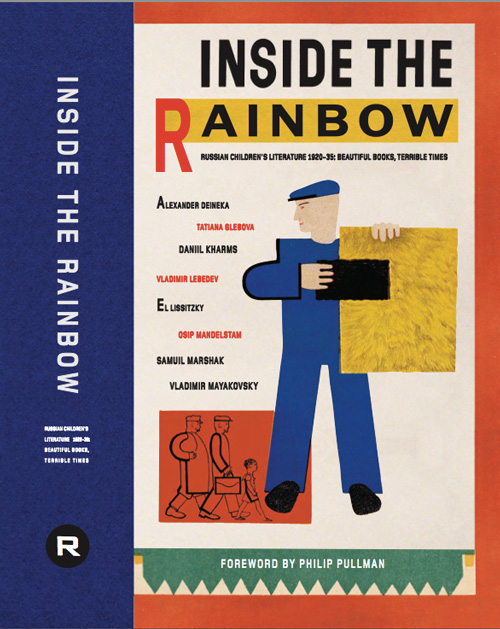 Since the golden age of children’s literature in mid-century America and Europe, we’ve seen children’s books used for purveying everything from philosophy to propaganda to science. But two decades before this Western surge of design innovation and conceptual experimentation in children’s books, a thriving scene of literature and art for young readers was taking root on the other side of the soon-to-be Iron Curtain. Inside the Rainbow: Beautiful Books, Terrible Times (public library), edited by Julian Rothenstein and Olga Budashevskaya, collects the most vibrant masterpieces of Russian children’s literature from the short but pivotal period between 1920 and 1935 — a time-capsule of the ambitious aesthetic and imaginative ideology that burned bright for a few brief moments before the onset of communism cast down its uniform grayness.
Since the golden age of children’s literature in mid-century America and Europe, we’ve seen children’s books used for purveying everything from philosophy to propaganda to science. But two decades before this Western surge of design innovation and conceptual experimentation in children’s books, a thriving scene of literature and art for young readers was taking root on the other side of the soon-to-be Iron Curtain. Inside the Rainbow: Beautiful Books, Terrible Times (public library), edited by Julian Rothenstein and Olga Budashevskaya, collects the most vibrant masterpieces of Russian children’s literature from the short but pivotal period between 1920 and 1935 — a time-capsule of the ambitious aesthetic and imaginative ideology that burned bright for a few brief moments before the onset of communism cast down its uniform grayness.
Philip Pullman, who knows a thing or two about the permeating power of children’s storytelling, writes in the foreword:
The world of Russian children’s illustrated books in the first twenty years or so of Soviet rule is almost incomparably rich. What were they doing, these commissars and party secretaries, to allow this wonderland of modern art to grow under their very noses? I expect the rule that applies to children’s books was just as deeply interiorized in the Soviet Union as it has been in the rest of the world: they don’t matter. They can be ignored. They’re not serious.
(Coincidentally, Neil Gaiman recently lamented that “there is [no] such a thing as a bad book for children. … Well-meaning adults can easily destroy a child’s love of reading.”)
Pullman contrasts the distinctive, indigenous style of this Russian book art with its Western counterparts from the same era:
The kind of modern art that lives so vigorously and joyously in these pages is, of course, one with a Russian ancestry. There is no Cubism here … no Post-Impressionism … no Dada. What there is is Constructivism, and plenty of it, and of its metaphysical parent, Suprematism. Basic geometrical shapes, the square, the circle, the rectangle, are everywhere; flat primary colors dominate.
And yet, conceptually, many of these illustrations find — and often presage — certain Western counterparts. Take, for instance, these spreads from Boris Ermolenko’s 1930 visual taxonomy of occupations, Special Clothing, which call to mind beloved French illustrator Blebolex’s book People, one of the best children’s books of 2011:
3D-Printed Pizza by Natural Machines
NylonthreadThe future is now.
Barcelona-based Natural Machines, a company working on a 3D printer for food called Foodini, printed out the dough and sauce for a pizza before adding cheese and spices by hand. The result? A very round pizza with sauce evenly spread across its surface. Yum!
What’s the hardest part about making homemade pizza? Shaping the dough & even layer of sauce. So we printed both. pic.twitter.com/qOJQGzUUbD
— Natural Machines (@NaturalMachines) December 3, 2013
via The Daily Dot
Animals
NylonthreadThis house? FULL OF LOVE. XOXOX
Your blogpost soundtrack: ANIMALS by Talking Heads
Recently Kelly was at the animal shelter to help our neighbor choose a cat for her daughter when I got a text from her asking “What do you think?” and with that we now are the proud parents of 4 cats and 2 dogs (with a hamster and fish coming soon). Let’s meet ‘em all, shall we?
 First, here’s Milo, the three-legged cat. He’s the “what do you think” cat. He’s Kelly’s lovebug
First, here’s Milo, the three-legged cat. He’s the “what do you think” cat. He’s Kelly’s lovebug
 Next is Puma. He’s my cat (bonus video to follow)
Next is Puma. He’s my cat (bonus video to follow)
 Meet Lulabelle, the only female cat we have. She’s Liam’s baby.
Meet Lulabelle, the only female cat we have. She’s Liam’s baby.
 Hey, says Thea, don’t forget MY cat. Well hello George.
Hey, says Thea, don’t forget MY cat. Well hello George.
 Say hi to Dog, #1, Tina, she’s wonderful but a little on the hyperactive side
Say hi to Dog, #1, Tina, she’s wonderful but a little on the hyperactive side
 If you’re gonna have a three-legged cat then you better have a mostly blind dog. Hank fills that role admirably.
If you’re gonna have a three-legged cat then you better have a mostly blind dog. Hank fills that role admirably.
BONUS VIDEO
I had a cold recently and once when I sneezed Puma made those sounds a cat does when it sees a bird out the window, THEN I found out he would do it every time I made a sniffle sound. Don’t believe me? Here is proof
The 30 Pictures From "Sherlock" You've Waited Nearly Two Years To See
NylonthreadYES!!!
This really is an awful lot of pictures to release all at once. We’re still excited though.
You may have heard that Sherlock series three is now definitely a thing that will be happening.

BBC
The first episode is called The Empty Hearse and premieres in the UK on BBC One on January 1.

BBC
John is going to find out how his best friend faked his death and more to the point, why.

BBC
It was written by Mark Gatiss, who also plays Sherlock's brother Mycroft.

BBC
Experimental Glow-in-the-Dark Ice Cream is Made with Synthesized Jellyfish Protein
NylonthreadWould you eat this?
UK-based ice cream company Lick Me I’m Delicious has created an experimental ice cream that glows in the dark when it is licked. The glowing effect is caused by a synthesized version of a bioluminescent protein found in jellyfish (yum!) Company founder Charlie Harry Francis reports that, given the astronomical price of the protein, a scoop would cost about $220.
via Inhabitat
Why Scott Adams Wished Death On His Dad
Nylonthread"If you have acted, or plan to act, in a way that keeps doctor-assisted suicide illegal, I see you as an accomplice in torturing my father..." Word. h/t Osiasjota
Read more of this story at Slashdot.
The 2013 99U Gift Guide for Getting Things Done
NylonthreadI'm having a hard time noting my favorite item in this list -- they're all pretty awesome. The temporary tattoos caught my eye.

Calendar To-Do List Pad 2014 ($24.95)
This Ryan McGinnes original is the perfect resource to track everything from things to do, notes, or doodles. It’s big enough to have room for everything you might throw its way (11″ x 4.5″), a ribbon to keep you on track, and is easily shelved for future archival purposes. Plus, Helvetica.
—
Makers Gonna Make Notebook (3 for $12.99)
If you’re planning on making ideas happen, these hand-printed on high-quality minimalist Muji notebooks are the perfect motivator to start shipping.
—
Tattly ($5 – 15)
These temporary tattoos are not your run-of-the-mill vending machine kind, but imaginatively designed and quality made (plus they can last for days). Buy individually as stocking stuffers or get the sets for a fun, unique gift. They even have greeting cards too, for all of the design perks minus the tattoo.
—
Jumbo Flip Clock ($49.99)
This is no flimsy digital piece of plastic; this hefty, analog clock counts the minutes and hours in a classic rolodex-style.
—
Philips Wake-up Light ($89.99)
If you know someone who’s trying to become a morning person, or at least make their wake up time a little less rough, we found this fake-dawn simulator light to be a godsend during our last #labrat.
—
Notification Memo ($9.95)
It’s hard enough to ignore these suckers on your phone, so can you imagine how well they’ll hold your own attention in real life?
—
Palomino Blackwing 602 Pencil (12 for $19.95)
Blackwing pencils have a long, iconic history as the favorite writing utensil of luminaries like John Steinback, Stephen Sondheim, and Chuck Jones. Though the fabled ($40 per pencil) Eberhard Faber is no longer in production, the Palomino Blackwing 602 is a close reproduction with a much lighter price tag.
—
The Best of McSweeney’s Signed Deluxe Box Set ($65)
If you’re a literary nerd or bookworm, you’ll already know the value that comes from getting the best of fifteen years worth of first-rate fiction and non-fiction (not to mention comics, postcards, baseball reportage, and a catalog). Forget your Kindle; this thoughtfully designed box set will restore your faith in print.
—
Maximize Your Potential ($6.93)
Okay, so we might be a little biased, but we found this book to be perfectly timed for the new year. Whether you’re stuck in a rut, unsure of where to begin, transitioning, or aiming higher, this book has the actionable steps and big ideas to get you there.
—
CLIC Wooden iPhone 5/5S Case ($49.99)
We’ve been looking for a decent wooden case for years, and this is the first one that merges real cherry wood with durable functionality and modern design.
—
iPhone Stencil Kit ($28.99)
For the UX designer in your life, the UI Stencils (and sketchpads, eraser boards, sticky notes — they’ve thought of everything) will make their life much, much easier. Available in Website, iPad, Android, Windows, and Google Chrome, too.
—
GoPro HERO3+ Silver Edition ($299.95)
The latest in GoPro’s line, HERO3+ is smaller, lighter, and more powerful than its predecessors. At double the megapixels for only $100 more than the HERO3+’s White Edition, we think the Silver Edition is your best bet. Use it to film your next adventure, whether big or small.
—
Sugru ($10 – 20)
If you love to build, tinker, or need quick fixes while on the go, Sugru is about to change your life. This amazing stuff is a self-setting rubber that can be molded by hand, and once cured overnight, becomes a flexible but durable silicone rubber. Don’t buy new stuff; improve what you’ve got.
—
Hard Graft iPad Air Tilt Case & Stand ($153)
There’s something extra luxurious about combining smooth metal with wool and leather; maybe it’s a texture thing. Either way, this iPad case not only looks amazing, but it’s fully functional with three different stand positions.
—
Unisex Navy Stripe Backpack ($95.70)
It’s hard to find a good workbag that doesn’t look like a workbag. This one, and many of the others by BagyBag, have multiple sizes, pockets, and ways of carrying it, with a uniform appeal.
—
Coin ($100 but 1/2 off while pre-orders last)
Coin is an exciting, new device that promises to combine all of your credit cards, debit cards, gift cards, loyalty cards, and membership cards into one. It’ll alert you if you’ve left it behind and even deactivate itself if you don’t retrieve it within a certain amount of time.
—
23andMe ($99)
If you’d ever wondered about your ancestry or what genetic health risks you might have, 23andMe gives a full, comprehensive look at your health and heritage. UPDATE: The FDA is asking for 23andme to provide proof of accuracy. Read what’s going down here first.
—
Nest Protect ($129)
The traditional smoke alarm is remade in the Nest Protect. It uses a human voice to tell you the danger it’s sensing and where, can be deactivated with a wave, and shows you the battery level visually instead of beeping confusingly for days. Of course, we happily back any company so dedicated to doing the work.
—
littleBits Kits (Start at $99)
The possibilities are endless with littleBits, which gives you the modules to build whatever kinds of circuits come to your mind in bright, fun colors. You can purchase individual pieces for cheap to add on or full kits to get a good starting point. People have made everything from electric toothbrushes to doorbells, synth spin tables, and a swimming shark mobile.
—
Cards Against Humanity ($25 or free for downloaded)
Over the past year this has become one of our go-to games, perfect for ice breakers or at parties. The beauty of it relies in its humor (crass yet charming), room for interpretation, and ability to become a whole different ballgame, if you will, depending on who’s playing.
—
Advice Mug ($16)
If you need a little motivation with your morning coffee, tea, or whatever, this mug is going to hand it right to you. We’re firm believers that good advice is best taken with even better design and, sometimes, a little profanity.
—
Bottle Opener ($14)
So simple it’s genius, this beautifully designed (and wonderfully cheap!) wooden bottle opener uses a strong magnets to catch bottle caps and to store it within reach on the fridge when not in use.
—
How about you?
What did we miss and what products are your must-haves this year?
How good is your zip code?
NylonthreadWhoa, my zip code has 75% college graduates in it. That's waaaay above normal, isn't it?

The Washington Post reports on "super zips"--postcodes that rank highly for income and college education levels. A striking interactive map is included in the article, to show what money looks like from space.![]()
One Of The Main Characters On "Family Guy" Was Killed Off Last Night
NylonthreadWhat?!?
They actually did it. SPOILER AHEAD.
"Family Guy" killed off beloved family dog Brian Griffin in last night's episode. He was hit by a car and apparently won't be coming back. That's it. He is gone.

See the farewell here
Body Shapes of Elite Athletes Documented in Side by Side Photographs in the Book ‘Athlete’ by Howard Schatz
NylonthreadI can't stop looking at this image! All different shapes and sizes, all athletes. A handful of them are flabby -- kudos to the photographer for including them; wrestlers, maybe?
In his book Athlete, photographer Howard Schatz documents the different body shapes of elite athletes. Being place side by side, the athletes provide sharp contrast to one another; each respective shape formed by singular dedication to each chosen sport.
Working primarily with dancers, Schatz has been particularly attracted to form shaped by function. Now, in Athlete, he reaches the zenith of his photographic paean to the human body, creating an astonishing record of the specialized forms both adapted to the wide spectrum of sport and shaped by fiercely focused effort.
images via imgur, Howard Schatz
via reddit, Bored Panda,
Yuki the Talking Shiba Inu Says ‘Hello!’
NylonthreadKelly, you need to record Tina saying "Outside!"
In this 2012 video, Yuki the Shiba Inu dog says “Hello!” when prompted by her owner.
Here’s another video of Yuki showing off her tricks:
videos via James Kimball
Rosie's Rainbow Scarf
NylonthreadI love these photos of Rosie! She looks so happy. While I was taking these photos, she was giggling and goofing around the whole time — the outtakes are pretty funny.
I spread the scarf out so the beautiful reds, oranges, and pinks can be seen. She likes the purples best, so I made a point to end the scarf with the purples in front so she could enjoy them. Rosie's modeling the scarf next to her signature rainbow hairband. I'll go back to check, but I think in almost every school portrait of her back to Kindergarten, she's wearing her rainbow hairband. Now she'll be pairing it with her matching scarf!
When Being an “Expert” Is a Bad Thing
NylonthreadI worked with another designer once who wouldn't consider expanding his "style." He held onto it tightly, saying "this is what I bring to the table." When he was offered the chance to build a brand, he latched onto it and honed it down to a sharp edge (he's still there, 12 years later). I left as soon as I could; I'd rather explore the landscape.

In today’s creative world it pays to be a specialist. But is that the best thing for our career? Robert Twigger at Aeon Magazine:
When the body remains still and the mind is forced to do something repetitive, the human inside us rebels.
The average job now is done by someone who is stationary in front of some kind of screen. Someone who has just one overriding interest is tunnel-visioned, a bore, but also a specialist, an expert. Welcome to the monopathic world, a place where only the single-minded can thrive. Of course, the rest of us are very adept at pretending to be specialists. We doctor our CVs to make it look as if all we ever wanted to do was sell mobile homes or Nespresso machines. It’s common sense, isn’t it, to try to create the impression that we are entirely focused on the job we want? And wasn’t it ever thus?
In fact, it wasn’t. Classically, a polymath was someone who ‘had learnt much’, conquering many different subject areas. As the 15th-century polymath Leon Battista Alberti — an architect, painter, horseman, archer and inventor — wrote: ‘a man can do all things if he will’. During the Renaissance, polymathy became part of the idea of the ‘perfected man’, the manifold master of intellectual, artistic and physical pursuits. Leonardo da Vinci was said to be as proud of his ability to bend iron bars with his hands as he was of the Mona Lisa.
Twigger argues, and we’d agree, that the best ideas come from a cross-pollination of seemingly unrelated fields. Sometimes we think we need to specialize to survive, but maybe the future will better reward “Expert Generalists.”
Previously: Picasso, Kepler, and the Benefits of Being an Expert Generalist
My Life Scoop: 10 Amazing Gadgets + Apps for Travel
NylonthreadGadgets!

We are just about to round the corner into the busiest travel season of the year. The holiday season, I have a big car ride for Thanksgiving and a cross-country plane trip lined up for Christmas. As much as I love the time with family and friends, the travel + holiday combo can result in some major stress. So for this week’s My Life Scoop, I’ve rounded up my list of gadget and app must haves when it comes to travels. Click here for the all the links. (Including my favorite app that will keep you from checking email every five minutes!) -Amy


A Pie Chart Explains How to Get People to Watch a Movie
NylonthreadYep.
Matthew Inman of The Oatmeal has created a funny pie chart that explains the reasons he’ll watch a movie. Hint: it’s not about the cast or how many awards the film won.
image via The Oatmeal
Ranking Every Episode Of "Buffy The Vampire Slayer"
NylonthreadALL 144 EPISODES? Ranked from worst to best? I think I'll be tagging this for later ridicule.
Seven seasons, 144 episodes, so many feelings. This is one attempt at ranking every episode of Buffy the Vampire Slayer , from worst to best.
"Beer Bad" (Season 4, Episode 5)

Writer: Tracey Forbes
Director: David Solomon
In a true series low, Buffy gets drunk on magic beer that turns her into a Neanderthal. And to a Neanderthal, yes, it might be entertaining to watch Buffy and her fratty drinking buddies talk like cavemen and break things, but to more evolved individuals, it's just awful.
20th Television
"Bad Eggs" (Season 2, Episode 12)

Writer: Marti Noxon
Director: David Greenwalt
The only thing worse than vampire cowboys Lyle and Tector Gorch is the actual plot, which revolves around a prehistoric parasite latching onto Sunnydale High students by way of eggs they've been assigned to take care of for health class. Bad eggs. Very, very bad.
20th Television
"I, Robot... You, Jane" (Season 1, Episode 8)

Writers: Ashley Gable and Thomas A. Swyden
Director: Stephen Posey
Willow falls in love with her online boyfriend, who turns out to be an ancient demon named Moloch downloaded into the internet. The episode is hilariously dated, but that's about all it has going for it. Beware the dangers of the internet! But mostly, beware really bad episodes of television.
20th Television
"Some Assembly Required" (Season 2, Episode 2)

Writer: Ty King
Director: Bruce Seth Green
Buffy takes on Frankenstein, and the results aren't pretty. The basic concept — a high school kid building the perfect girlfriend for his dead brother — is creepy enough. The execution, on the other hand, is scary in the bad way. One bright spot: Angel is jealous of Xander, and it's absurd.
20th Television
This Unreal MIT Invention Allows You To Reach Through The Screen And Touch Things
NylonthreadMind blown.
And it’s completely and totally mind-blowing. Seriously.

The MIT media lab's Tangible Media Group recently unveiled inFORM, its dynamic shape display, which, besides being the coolest tech invention we've seen in months, also allows you to interact with real objects by reaching through your screen.
Here's how they describe it:
Dynamic Shape Display that can render 3D content physically, so users can interact with digital information in a tangible way. inFORM can also interact with the physical world around it, for example moving objects on the table's surface. Remote participants in a video conference can be displayed physically, allowing for a strong sense of presence and the ability to interact physically at a distance.
Did we mention it's mind-blowing? Because it is.
Road trip!
NylonthreadPositive attitude FTW!!
NaBloPoMo, and Happy All Saint's Day
NylonthreadMy first post for NaBloPoMo. Feeling rusty at forced, timed posts, but by the end of it I usually am grateful for the practice.
Dash, in the "hooded scream" costume, found his buddy, Max, who was wearing some sort of Norse god costume. They're adorable!
Rosie was dressed as an "Artist Vampire" and didn't want her photo taken. I snapped the photo below before she had a chance to dive out of my camera's way! Dash has been carrying a camera around with him lately and told us that he was thinking about being a paparazzi — he'll get plenty of training just by trying to get a shot of Rosie. She's wily!
Rosie did her own makeup for vampire teeth and blood and was pretty proud of her work. Funny, for our actual trick-or-treating, we didn't have a chance to get the makeup on (for anyone's costume actually; gotta stay on schedule...), and without the teeth, everyone guessed that she was Little Red Riding Hood. Understandable, don't you think?
It was dark and rainy on Halloween night, but we made the best of it. We brought umbrellas, I wore a big hat, and had plenty of glow-sticks and flashlights. The kids had quite a haul, as the places they visited had plenty of candy! There seems to be fewer and fewer trick-or-treaters on our street—we only had 6-8 visitors—and I'm not sure why. There are plenty of kids on our street. I'm thinking that the parents take them to parties instead or a busier neighborhood and just hang out. I don't blame them. Dressing up and getting candy is fun, but when it's cold and wet? It's nicer indoors.
Is trick-or-treating going strong where you are? Or is it on the wane?
The Lego Adventure Book, Volume Two Does It Again
NylonthreadRosie loved this book. I liked the fact that it wasn't in pink/pastel or black/blue/green packaging and she felt comfortable working with any LEGO design, not just clearly "girl" ones.

Image: No Starch Press
Kris Bordessa’s son, Evan, talks about The Lego Adventure Book, Volume Two.
Author Megan H. Rothrock is back with a second book in the Lego Adventure Book series. The Lego Adventure Book, Volume One was great; it had a fun backstory, interesting creations, and instructions for some of the more basic builds. The Lego Adventure Book, Volume Two is even better. The book starts off at the Idea Lab once again, where you’re encouraged to build some simple models to add to the original Idea Lab layout discussed in volume one. Once you’ve built those models, you dive in head first into building some pretty impressive models. Here’s what Lego says:
Learn to create sleek spaceships, exotic pirate hideaways, fire-breathing dragons, fast cars, and much more. With nearly 40 step-by-step breakdowns and 100 example models, The Lego Adventure Book is sure to spark your imagination and keep you building!
The models featured in this book were created by builders within the online Lego community, which I’m pretty familiar with. Since I’ve met or had contact with many of the artists included in this collection, I connected with this volume more than I did with the first book. The creators featured in this book include Mark Stafford (Lego set designer), Tommy Williamson (founder of BrickNerd), Tyler Clites (freelance Lego artist), and more. I had the opportunity to see Tommy Williamson’s slightly modified visual effects Stage 18 at BrickCon 2013, though I had no idea it was going to be featured in this book.
One model, The Sludge Puppy created by Tyler Clites AKA Legohaulic, really brought back memories. In fact, it was one of the first models I saw before joining the online Lego community. I was pretty hyped to see that Tyler had a chapter of the book dedicated to his builds. But when I saw instructions to build the Sludge Puppy included in the book, well, I had a bit of a fanboy moment. Even though the model is a simplified version, with all strictly “legal” techniques, it’s still a fantastic model. And while I haven’t had time to build one myself, I plan on doing so in the near future. I was also impressed with the car ferry and the collection of film equipment models.
I’d highly recommend The Lego Adventure Book, Volume Two to anyone who enjoys building with the little plastic bricks! Whether they’re new to the hobby, or a hardcore builder, this book has enough for everyone, and is not to be missed.
GeekMom received a copy of this book for review purposes.
The post The Lego Adventure Book, Volume Two Does It Again appeared first on GeekMom.
Tumblr | 443.png
Nylonthread"Art museums are just full of Renaissance selfies..." LOL h/t osiasjota

The Key To Great Feedback? Praise the Process, Not the Person
NylonthreadHey, these are great tips to file away for future use! Also, validating, given that I do try to give colleagues honest feedback on screw-ups, even if it might be come off as harsh.

Even with the best intentions, feedback can easily backfire. The praise you give doesn’t lead to greater confidence. Your expert advice seems to take the wind right out of his sails. You decide to “go easy” on her, only to find her growing more anxious by the minute. And you are far from alone if you’ve had a hard time figuring out why.
Fortunately, scientific studies of motivation have identified clear, principled reasons why some types of feedback work, and others don’t. It is neither mysterious nor random. If you’ve gotten it wrong in the past (and who hasn’t?), then you can do a better job giving feedback from now on by sticking to a few simple rules:
Rule #1: When things go wrong, keep it real.
It’s not easy to tell someone that he screwed up, knowing it will cause him anxiety, disappointment, or embarrassment. But don’t make the mistake of protecting a team member’s feelings at the expense of the truth, because without honest feedback he can’t possibly improve. Remember that negative emotions exist for a reason – they motivate us to take action to fix the problem.
Never try to make a team member feel that he wasn’t responsible for what went wrong (assuming he is, in fact, to blame), just because you don’t want to be “hard” on him. Letting him off the hook for his own mistake will rob him of a sense of personal control over his own work. Nothing is more de-motivating than feeling powerless. The short-term discomfort is nothing compared to the long-term damage that powerlessness can do.
Rule #2: When things go wrong, fight self-doubt.
We all need to believe that success is within reach, regardless of the mistakes we have made in the past. This requires us to be tactful, to share feedback without surrendering the possibility for improvement. To do this,
- Make your advice specific. What exactly can your team member do improve? When you are a leader, helping others figure out how to do it right is just as important as letting them know what they are doing wrong.
- Emphasize actions that she has the power to change. Talk about aspects of her performance that are under her control, like the time and effort she put into a project, or the strategic approach she used.
- Avoid praising effort. Studies show that being complimented for “effort” after a failure not only makes people feel stupid, but also leaves them feeling incapable of reaching their goal. In these instances, it’s really best to stick to purely informational feedback – if effort isn’t the problem, figure out what is, and let the employee know.
Rule #3: When things go right, avoid praising ability.
I know we all like to hear how smart and talented we are, and so naturally we assume that it’s what our team members want to hear, too. Of course they do. But it’s not what they need to hear to stay motivated.
Studies show that when we are praised for having high ability, it leaves us vulnerable to self-doubt when we encounter difficulty. If being successful means you are “a natural,” then it’s easy to conclude when you’re having a hard time that you just don’t have what it takes.
Instead, praise aspects of your employee’s performance that were under his control. Talk about his creative approach, his careful planning, his persistence and effort, his collaborative attitude. Praise the process, not the person. That way, when he runs into trouble later on, he’ll remember the process that helped him to succeed in the past, and put that knowledge to good use.
***
Using these three rules, you’ll be able to give your team just the right combination of hard truth, helpful guidance, and motivational pep talk to get them working at their very best.
—
How about you?
How do you like receiving feedback?
How to Be Creative: It’s All in the Process
PBS Digital Studios’ series Off Book provides an insightful, in-depth look at how creativity operates, the misconceptions that surround it still, and the artist’s life struggle to always keep pushing forward. We’re not “naturally” creative, there’s a defined process that encourages idea creation, as Off Book shows us.
Watch for yourself (running time – 9 minutes):
The Grand Budapest Hotel, An Upcoming Film by Wes Anderson
NylonthreadTell me more...
The Grand Budapest Hotel is the latest film by director Wes Anderson and its poster was released, revealing an illustration of a lavish pink hotel set in the mountains. It will feature Bill Murray, Jason Schwartzman, Adrian Brody, Owen Wilson, F. Murray Abraham, Edward Norton, Mathieu Amalric, Willem Dafoe, Lea Seydoux, Jeff Goldblum, Jude Law, Tilda Swinton, Harvey Keitel, and others. The film’s trailer will be released on October 17th, 2013.
The Grand Budapest Hotel tells of a legendary concierge at a famous European hotel between the wars and his friendship with a young employee who becomes his trusted protégé. The story involves the theft and recovery of a priceless Renaissance painting, the battle for an enormous family fortune and the slow and then sudden upheavals that transformed Europe during the first half of the 20th century.
image via IMDB
Felt Masks: A Quick Costume Change
There are many ways in which people attempt to leave the narrow confines of their world. Some people read, these days most people blog, some like to sit in the woods looking for fairies, to each their own. I find that in my everyday normal life, I often have cause to step out of myself for a moment, and when I do it is handy to have a disguise on hand. Whether it be for a quick costume change to aid a getaway, or an impromptu street performance, I find the face mask to be an ingenious tool of disguise for everyday wear. My children tend to agree, my co-workers less so.
The base of the most flexible yet sturdy face mask is three layers of felt. Much like the perfect omelet, two will suffice but three is so much better. With a piece of elastic, some hot glue, and embellishments you will be ready to take on any situation.
You will need:
Felt pieces
1/4 inch elastic
A sewing machine and/or hot glue gun
Here are patterns for the masks I find most consistently useful:
Dapper Man
If you are called into afternoon tea unexpectedly, this can be used to cover up any misadventures of the morning.
Pirate—fully ocular
The addition of a patch would make this a 2-for-1 costume change. Be advised that your pet will also need a parrot mask in order to complete your disguise.
Zombie
The placement of brains and scars should be to your preference. I prefer my frontal lobe to be exposed on the left side, but adjust according to taste. With the Zombie mask, I like to attach the hair piece with red thread, this more appropriately resembles the blood seeping from the brain.
Robot
A pattern has been provided for a very symmetrical robot, but this mask may be decorated as you will. Be warned that with the addition of too many controls, you run the risk of your own consciousness being assimilated into the robot hive mind.
 There are several methods by which these masks may be constructed. Hand stitching would certainly be an option, but is rather laborious. Unless you are channeling your inner pioneer I would not advise this method. The sewing machine produces the most sturdy masks, ones that can be washed with more urgency—useful when on an undercover zombie killing spree. I find that a sewing machine/glue gun combo works best for me, even after accidentally gluing one of them to the table and burning myself rather badly.
There are several methods by which these masks may be constructed. Hand stitching would certainly be an option, but is rather laborious. Unless you are channeling your inner pioneer I would not advise this method. The sewing machine produces the most sturdy masks, ones that can be washed with more urgency—useful when on an undercover zombie killing spree. I find that a sewing machine/glue gun combo works best for me, even after accidentally gluing one of them to the table and burning myself rather badly.
The first step when making any mask is to print out the pattern and test it for size. The mask plans included here work well on a child or an adult, but if you need to space the eye sockets differently, or prefer more facial coverage, then increasing the size at which you print should give you your preferred look.
 For the most part, the base of the mask will always be constructed first and independently of the details, though you can adjust this according to your preference for glue gun or sewing machine. In the construction of the base you will be attaching the elastic strap and defining the eye sockets.
For the most part, the base of the mask will always be constructed first and independently of the details, though you can adjust this according to your preference for glue gun or sewing machine. In the construction of the base you will be attaching the elastic strap and defining the eye sockets.
Position the three layers of felt together. Begin to sew as pictured in the instructions, with a starting point three quarters of the way up your right eye (facing out).
When you reach the same position on the left eye, you will insert the elastic about a quarter inch in and continue to sew. As you approach your starting point, insert the other end of the elastic and sew the mask together, ending your stitched over the elastic.
As you approach your starting point, insert the other end of the elastic and sew the mask together, ending your stitched over the elastic.
Sew around the eye sockets.
Trim any excess felt caused by shifting materials. With the Zombie mask be careful not to cut off the sunken eye, in this case excess is the effect you are going for.
Most of the details are best attached after the main mask has been constructed—by hot glue gun or by hand stitching if you have the patience. You can opt to run them through the machine, but the smaller pieces will often get stuck. Again all bets are off with the Zombie mask, as a crumpled up piece of felt with excess thread bunched up might actually be an advantage. For Dapper Man this will never do.
You are now ready for the Zombie apocalypse or afternoon tea, whichever comes first.
The post Felt Masks: A Quick Costume Change appeared first on GeekMom.
This mom with a rare form of cancer can't get treatment she needs due to government shutdown

Michelle Langbehn. Photo: Natural Grace Photography, via Washington Post
Michelle Langbehn has a rare form of cancer that affects about 1% of U.S. cancer patients. She was diagnosed in April 2012, shortly after giving birth to her daughter. She was 29.
She spoke to the Washington Post about how the government shutdown has affected her. The short version: she can't get the life-saving treatment she needs; a clinical trial that provides an option in a case where other more well-established treatment protocols have failed.
The Washington Post's Sarah Kliff explains:
After nine months of chemotherapy, she and her doctor began looking into other potential treatment options, including a trial at the National Institutes of Health. Langbehn began filling out the paperwork to apply last month. Things were going well until late September, when she got a call from the NIH: If the government shut down, the trial would not accept new patients. Now, she is among an estimated 200 patients turned away each week from clinical trials there. Langbehn has started a petition asking the government to re-open the treatment option.“This was not supposed to happen. Nobody wanted the shutdown to happen," says Langbehn. "If I had a message, it would be that lives are at stake.”
“This is a matter of life or death. I’m not just doing this for myself. There are 200 people that are trying to get into clinical trials each week. I want to speak for all of us.”
"People don’t want to be enrolled because they're doing well," Langbehn says. "They’re looking because of something that's wrong. For them to have that taken away, it almost makes you want to lose hope in a way."
Related Boing Boing posts:
• "US gov shutdown may mean some kids with cancer won't be treated, CDC's outbreak detection programs also halted"
• "Meet two cancer patients whose treatment is on hold due to US gov shutdown: an 8yo girl, and a father of 3"![]()















